














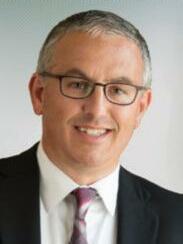

And those who know this fact have done tremendously well.
This is Tyler Winn, CPA, Founder of Cirrus Payroll His rm processes 176 payrolls with just one sta member. Search on Google for “payroll services in Tulsa, OK”. You’ll nd 91 ve-star ra ngs, compared to two-star ra ngs for a na onal payroll service bureau.

Richard Rogers, EA is CEO of Mother Lode Bookkeeping. The payroll solu on they use has eliminated compliance headaches, enabling them to process hundreds of clients painlessly
This kind of success isn’t limited to small rms Top 100 rms like Hill, Barth & King, CPAs and Consultants have also done extremely well with payroll services. According to Mar n Gargano, CPA, Principal at HBK, his rm has expanded its payroll prac ce through 14 of their o�ces

So how did these rms do it?
These rms discovered that Payroll Relief from AccountantsWorld lets their rms process payroll much faster and easier than the payroll solu ons they were using That’s because cloud-based Payroll Relief was created exclusively to help accountants o er highly pro table payroll services without compliance headaches.
Knowing this fact, these rms did what any rm that is serious about their payroll prac ce would do –they switched to Payroll Relief.
Because most accountants don’t know one cri cal fact.


CPACharge is a professional, affordable online payment solution that lets you give clients the options they want Unlike other payment solutions, CPACharge deposits 100 percent of payments, with fees debited the following month, for easy, accurate reconciliation We provide PCI Level 1 compliance and security, and expert in-house support Get the solution that’s trusted by more than 50,000 professionals as the best way to get paid CPACharge




ILLINOIS CPA SOCIET Y
550 W Jackson Boulevard, Suite 900, Chicago, IL 60661 www.icpas.org
Publisher/President & CEO
Todd Shapiro
Editor Derrick Lilly
Creative Director
Gene Levitan
Photography
Jay Rubinic + Derrick Lilly
Circulation
John McQuillan
Chairperson
Rosaria Cammarata, CPA, CGMA | Mattersight Corporation
Vice Chairperson
Geoffrey J Harlow, CPA | Wipfli LLP
Secretar y
Dorri C McWhorter, CPA, CGMA, CITP | YWCA Metropolitan Chicago
Treasurer
Kevin V Wydra, CPA | Crowe LLP
Immediate Past Chairperson
Lisa Hartkopf, CPA | Ernst & Young LLP
Christopher F Beaulieu, CPA, MST | FSB&W LLC
John C Bird, CPA | RSM US LLP
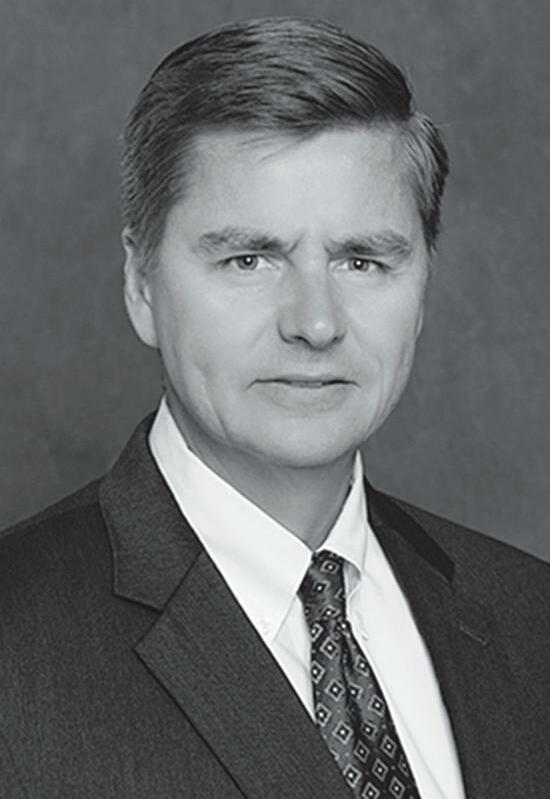
Brian J Blaha, CPA | Wipfli LLP
Jon S Davis, CPA | University of Illinois
Stephen R Ferrara, CPA | BDO USA LLP
Jonathan W Hauser, CPA | KPMG LLP
Scott E Hurwitz, CPA | Deloitte & Touche LLP
Anne M Kohler, CPA, CGMA | The Mpower Group
Thomas B Murtagh, CPA, JD | BKD LLP
Elizabeth S Pittelkow Kittner, CPA, CGMA, CITP | Litera Microsystems
Maria de J Prado, CPA | Prado & Renteria CPAs
Seun Salami, CPA | TIAA
Stella Marie Santos, CPA | Adelfia LLC
Andrea K Urban, CPA | ThoughtWorks Inc
BACK ISSUES + REPRINTS
Back issues may be available Articles may be reproduced with permission
Please send requests to lillyd@icpas org
Want to reach 25,000 accounting and finance professionals? Advertising in INSIGHT and with the Illinois CPA Society gives you access to Illinois’ largest financial community Contact Mike Walker at mike@rwwcompany com
INSIGHT is the magazine of the Illinois CPA Society Statements or articles of opinion appearing in INSIGHT are not necessarily the views of the Illinois CPA Society The materials and information contained within INSIGHT are offered as information only and not as practice, financial, accounting, legal or other professional advice Readers are strongly encouraged to consult with an appropriate professional advisor before acting on the information contained in this publication It is INSIGHT’s policy not to knowingly accept advertising that discriminates on the basis of race, religion, sex, age or origin The Illinois CPA Society reserves the right to reject paid advertising that does not meet INSIGHT’s qualifications or that may detract from its professional and ethical standards The Illinois CPA Society does not necessarily endorse the non-Society resources, services or products that may appear or be referenced within INSIGHT, and makes no representation or warranties about the products or services they may provide or their accuracy or claims The Illinois CPA Society does not guarantee delivery dates for INSIGHT The Society disclaims all warranties, express or implied, and assumes no responsibility whatsoever for damages incurred as a result of delays in delivering INSIGHT INSIGHT (ISSN-1053-8542) is published four times a year, in Spring, Summer, Fall, and Winter, by the Illinois CPA Society, 550 W Jackson, Suite 900, Chicago, IL 60661, USA, 312 993 0407 Copyright © 2018 No part of the contents may be reproduced by any means without the written consent of INSIGHT Send requests to the address above Periodicals postage paid at Chicago, IL and at additional mailing offices POSTMASTER: Send address changes to: INSIGHT, Illinois CPA Society, 550 W Jackson, Suite 900, Chicago, IL 60661, USA
We honor the distinguished life of our partner and friend.

Ionce told my boss, “I need to know what I don’t know, that I’ll need to know, before I know I need to know it ” That sounds crazy, but I’m guessing many of you have felt or feel the same way Despite having amazing resources and digital assistants like Alexa, Cortana, Google, Siri, and more at our fingertips, figuring out what you need to know (not just what you want to know) is harder than ever
Whether you’re in public accounting, corporate finance, consulting, or advising, the knowledge you need to not only survive in y o u r j o b b u t t o t h r i v e i n y o u r j o b , i s c h a n g i n g b y t h e m i n u t e You’re dealing with constant changes to accounting standards and tax acts, and new technologies like data analytics, robotic process automation, blockchain, cybersecurity, and more. Leading your clients and organizations through these changes is as critical as the changes themselves. How is one to keep up? Most importantly, keep looking forward
I’m an avid downhill skier, and I love skiing in the trees To do i t s a f e l y a n d s u c c e s s f u l l y ( a t l e a s t m o s t o f t h e t i m e ) , y o u n e e d highly developed skills, the foresight to always be looking three t o f o u r t r e e s a h e a d , a n d t h e r e a d i n e s s t o c h a n g e c o u r s e a t a m o m e n t ’s n o t i c e S u c c e e d i n g i n t h e w o r l d o f a c c o u n t i n g a n d finance is no different.

Developing skills in data analytics, blockchain, and cybersecurity, for instance, is no longer optional or limited to professionals in large firms and mega-corporations. I was talking to a partner in a mid-sized firm who told me that while he still has clients that prefer paper and pencil, he also has clients who expect him to be tech
savvy Another seasoned mid-sized firm partner recently asked for resources to begin incorporating artificial intelligence and robotic process automation into his audit practice.
The competencies to be successful accounting and finance professionals in our future are not limited to technology, though They also encompass technical, business, people, and leadership skills, which are becoming more interconnected in our digital world. The Illinois CPA Society is committed to helping you acquire the skills and knowledge to build these competencies and be futureready In addition to in-depth updates on standards updates and changes in tax laws, we have developed Academies of Learning in business development and data analytics, and we’ll add programs on cybersecurity and blockchain soon enough. Our upcoming, all-new ICPAS SUMMIT18 (formerly The Midwest Accounting and Finance Showcase) will also immerse you in hands-on, interactive learning on many of the topics mentioned above and more
Together, we’ll navigate the constantly-changing landscape ahead, making turns when necessary, and conquering the unknown Just like skiing in the trees is for me, we will never be finished Once we’re down the mountain, we’ll go right back up to do it all over again That’s what life-long learning is all about that’s what pursuing a passion is all about
{Follow Todd on Twitter @Todd ICPAS} {Watch Todd’s CEO Video Series on YouTube}
Navigate the constantly changing professional landscape and conquer the unknown.

“Millennials’ confidence in business, loyalty to employers deteriorate Respondents yearn for leaders whose decisions might benefit the world and their careers,” opens Deloitte in unveiling the findings of its 20 18 Millennial Sur vey
Indeed, reinforcing the issues highlighted in the 20 18 INSIGHT Special Feature, “The Culture Conflicts,” Deloitte’s survey again shows younger generations of workers immersed in and entering the workforce are upping their pressure on firms and companies to shif t long-standing business practices and reimagine corporate culture or suffer the consequences, i e high turnover, employee burnout, succession challenges, lost profitability, and more. In a tightening labor market, increasingly dominated by millennial and Gen Z workers, it may be wise to reckon their warnings
“Following a troubling year, where geopolitical and social concerns gave rise to a new wave of business activism, millennials and Gen Z are sounding the alarm,” notes Deloitte’s seventh annual Millennial Sur vey “Their concerns suggest this is an ideal time for business leaders to prove themselves as agents of positive change ”
Based on the views of more than 1 0,000 millennials questioned across 36 countries and more than 1,800 Gen Z respondents questioned in six countries, Deloitte suggests “positive change” means businesses working towards ser ving a true purpose in society, increasing diversity and flexibility, and investing in developing a future-proof workforce Here are the key takeaways

Millennials’ feelings about business’ motivations and ethics have dropped dramatically, with only a minority of millennials believing “businesses behave ethicall y (48 percent vs 65 percent in 20 17) and that business leaders are committed to helping improve society (47 percent vs 62 percent in 20 17) ”
“ There continues to be a stark mismatch between what millennials believe responsible businesses should achieve and what they perceive businesses’ actual priorities to be but where matches exist, the perception is that those
companies are more successful, have more stimulating work environments and do a better job of developing talent,” the sur vey notes
High turnover is a business issue the accounting and finance profession has struggled with for years, but Deloitte’s sur vey indicates it’s likely to hamper industries globally 43 percent of millennials and 6 1 percent of Gen Z respondents envision leaving their jobs within two years
Here again, culture is the culprit “Those who are less than satisfied with their pay and work flexibility are increasingly attracted to the gig economy, especially in emerging markets,” Deloitte notes And while the firm acknowledges that attracting and retaining millennials and Gen Z respondents begins with financial rewards, “it is enhanced when businesses and their senior management teams are diverse, and when the workplace of fers higher degrees of flexibility ”
Millennials and Gen Z recognize the current and future impor tance of an increasingl y automated and connected business world, but that doesn’t mean they’re ready for it, or the changes yet to come According to the sur vey, just 36 percent of millennials and 29 percent of Gen Z respondents working today believe they have the skills and know ledge they’ll need to thrive
“ While technical skills are always necessar y, respondents are especiall y interested in building interpersonal skills, confidence, and ethical behavior all of which they consider essential for a business to be successful,” Deloitte states in explaining that these generations of workers are looking for employers to take the lead in readying them for what’s ahead
To dive deeper into these issues and more, check out the 2018 INSIGHT Special Feature, “ The Culture Conflicts,” at www icpas org/culture
Board of Directors
CHAIRPERSON
Rosaria Cammarat a Mattersight Corporation
VICE CHAIRPERSON
Geof frey J. Harlow
Wipfli LLP
SECRETARY
Dorri C. McWhor ter
YWCA Metropolitan Chicago
TREASURER
Kevin V Wydra Crowe LLP
IMMEDIATE PAST CHAIRPERSON
Lisa Har tkopf
Ernst & Young LLP
DIRECTORS
Christopher F Beaulieu FSB&W LLC
John C Bird RSM US LLP
Brian J. Blaha
Wipfli LLP
Jon S. Davis University of Illinois
Stephen R Ferrara
BDO USA LLP
Jonat han W. Hauser
KPMG LLP
Scott E. Hur witz
Deloitte & Touche LLP

Anne M Kohler
The Mpower Group
Thomas B Mur t agh
BKD LLP
Elizabet h S. Pittelkow Kittner
Litera Microsystems
Maria de J. Prado
Prado & Renteria CPAs
Seun Salami
Teachers Insurance and Annuity Association of America
Stella Marie Santos
Adelfia LLC
Andrea K Urban ThoughtWorks Inc
Chapter Presidents
CENTRAL
Steven S Howard RSM US LLP
CHICAGO METRO
Sherman C. Wright Sherman Wright
CHICAGO SOUTH
Nicholas J Janis Ryerson Inc
FOX RIVER TRAIL
Kur t L. Schneider Exemplar Accounting and Tax Advisors
FOX VALLEY
Gar y P. Steeno Ayotte Decker LLC
NORTHERN
Jakob J Thompson Benning Group LLC
O’HARE
St avroula V. Ladas Michael J Singer & Co PC
Committee Chairs
ACCOUNTING PRINCIPLES
Brian T. Kot Cray Kaiser Ltd
AUDIT & ASSURANCE SERVICES
Scott R. Cosentine
Ashland Par tners & Company LLP
AWARDS
Kenton J Klaus
Deloitte Tax LLP
EMPLOYEE BENEFITS
JoAnn E. Cassell
Cassell Plan Audits Inc
ETHICS
Lawrence A Hor wich Wipfli LLP
GOVERNMENTAL EXECUTIVE
Daniel J Nugent
S tate of Illinois, Of fice of Auditor General
The Illinois CPA Society thanks its volunteer leaders for their tireless service and contributions. Volunteers like you are the foundation of the Society, and without you, we would not be able to achieve our core mission of enhancing the value of the CPA profession.
GOVERNMENTAL REPORT REVIEW
Stephanie I Blanco
John Kasperek Co Inc
ILLINOIS CPAs FOR POLITICAL ACTION
Floyd D. Perkins
Nixon Peabody
NOMINATING
Lisa Har tkopf
Ernst & Young LLP
NOT-FOR -PROFIT ORGANIZATIONS
Alison H. Fetzer
ORBA
PEER REVIEW REPORT ACCEPTANCE
Russell J. Wilson
Por te Brown LLC
SCHOL ARSHIP SELECTION
Mar trice Caldwell
OneGoal
TAX ADVISORY GROUP
Ronald A . Lewis
DeMarco, Kinnaman, Leis & Co
TAXATION BUSINESS
Nicholas S Romanelli
Clif tonLarsonAllen LLP
TAXATION ESTATE, GIFT & TRUSTS
Margaret L. Al-Qassas
Michael Silver
TAXATION EXECUTIVE
Jeremy A Dubow
NDH Group Ltd
TAXATION FLOW-THROUGH ENTITIES
James B Eisenmenger
Mar tin Hood LLC
TAXATION INDIVIDUAL
Matt hew J. Zaba FGMK LLC
TAXATION INTERNATIONAL
Roger J Yule Wipfli LLP
TAXATION PRACTICE & PROCEDURES
Deborah K. Rood
CNA Insurance
TAXATION STATE & LOCAL
Richard K. Strohmaier
Grant Thornton LLP
WOMEN’S
Lindy R. Ellis
Ernst & Young LLP
Member Forum Chairs
MANAGEMENT CONSULTING
Milan G. Weber
KwikClarity
PERSONAL FINANCIAL PL ANNING
Elizabet h D. Buf fardi
Crescendo Financial Planners Inc
Brian J. Kearns
Twombly Asset Management LLC
Task Force Chairs
COMMITTEE STRUCTURE & VOLUNTEERISM
Mark W. Wolfgram
Bel Brands USA
CPA EXAM AWARD
Elizabet h A . Murphy
DePaul University
LEGISL ATOR TAX GUIDE
Victor V. Scimeca
Victor V Scimeca, CPA
LIFETIME ACHIEVEMENT AWARD
Lisa Har tkopf
Ernst & Young LLP
Other Volunteer Group Chairs
DIVERSIT Y ADVISORY COUNCIL
Ant hony Fuller
Grant Thornton LLP
YOUNG LEADERS
ADVISORY COUNCIL
Meghan K Rzepczynski Corral Crowe LLP
There’s a new frontline in the cyber war it’s within our own companies “A disconnect about cybersecurity is causing tension among leaders in the C-suite and may be leaving companies vulnerable to breaches as a result,” states a new repor t from security firm Centrify and Dow Jones Customer Intelligence.

In “CEO Disconnect is Weakening Cybersecurity,” CEOs are called out by fellow C-suite technical of ficers (TOs) including CIOs, CTOs, CISOs, and even CFOs for being “misinformed about security” and “misaligned with reality ”
The sharp-tongued criticism has sur vey data to back it: Only 55 percent of CEOs say their organization has experienced any breach, compared to 79 percent of CTOs Fur ther, 60 percent of CEOs are investing most in malware protection even though most (8 1 percent) breaches exploit identity In fact, only 35 percent of TOs cite malware as a primar y threat Instead, TOs “point to identity breaches including privileged user identity attacks and default, stolen or weak passwords as the biggest threat,” the repor t states in revealing that while all respondents understand that identity breaches present a real danger, CEOs are much less inclined to give them prominence
In shor t, CEOs are setting their own security strategies, driven in par t, according to a sur vey of 800 senior executives, by sensational headlines about malware breaches in 20 1 7 like those about the cyber worm Wannacr y that
hobbled computers running Microsof t systems and other faulty assumptions
As a result, CEOs seem more focused on reducing the cost of a breach (55 percent) and protecting shareholder value (45 percent) rather than heeding the words of their TOs and CFOs and directing adequate budgets towards addressing the technical risks and challenges that threaten businesses today
“ While bottom-line considerations fall to them [CEOs], they are in danger of being penny -wise and pound-foolish if they fail to consider the impact of reputational damage,” the repor t says
Worsening the situation is poor communication between CEOs and TOs, and a gaping disconnect over who is truly in charge of cybersecurity The repor t reveals that 8 1 percent of CEOs say they are most accountable for their company’s cybersecurity strategy only 16 percent of TOs agree Rather, 78 percent of TOs say they are most accountable, and 56 percent of CFOs agree with them
“The disconnect between CEOs and TOs is resulting in misaligned priorities and strategies, as well as misinvestments in cybersecurity solutions, which are weakening security,” the report states “The status quo is not working Business leaders need to bridge the communications chasm with their TOs and rethink security with a focus on identity and privileged access To continue to do other wise risks exposure to a preventable crisis ”
Lifetime Achievement Awards
Wayne R. Ebersberger, CPA
Retired, Ernst & Young LLP
Penelope J. Yunker, Ph.D., CPA
Retired, Western Illinois University
Outstanding Educator Awards
Michael P. Donohoe, Ph.D., CPA, CGMA
Associate Professor of Accountancy, University of Illinois
Luis V. Plascencia, CPA, MST, MBA
Lecturer, City Colleges of Chicago
Lester H. McKeever Jr. Outstanding Leader in Advancing Diversity Award
Kevin E. Jackson, Ph.D., CPA
Associate Professor of Accountancy, Academic Director-BSA/MAS Programs, University of Illinois
Lester H. McKeever Jr. Emerging Leader in Advancing Diversity Award

Jeff Badu, CPA
Tax Practitioner, Badu Tax Services LLC
Young Professional Leadership Award
Michael J. Rodriguez, CPA
Senior Risk and Controls Consultant, WEC Energy Group
Time and Talent Public Service Volunteerism Award
Crowe LLP
Linda S. Abernethy, CPA
RSM US LLP
Governmental Executive Committee
Catherine L. Allen, CPA
Retired, CliftonLarsonAllen LLP
Peer Review Report Acceptance Committee
Cameron T. Clark, CPA, MBA
Retired, KPMG LLP
Illinois CPAs for Political Action Committee
Timothy C. Custis, CPA
Gorenz & Associates Ltd.
Governmental Report Review Committee
Michael A. Deering, CPA, PFS, MST
Mowery & Schoenfeld LLC
Taxation Estate, Gift & Trust Content Advisory Group
Lindy R. Ellis, CPA
Ernst & Young LLP
Women’s Executive Committee
Karen M. Fleming, CPA, MST BKD LLP
Taxation Estate, Gift & Trust Content Advisory Group
Paige B. Goepfert, CPA, MST, CSEP Andersen Tax LLC
Taxation Estate, Gift & Trust Content Advisory Group
Nancy L. Gonsiorek, CPA
Nancy L. Gonsiorek, CPA LLC
Not-for-Profit Organizations Committee
Michael R. Hartley, CPA
Crowe LLP
Audit & Assurance Services Committee
Noel T. Hastalis, CPA
Baker Tilly Virchow Krause LLP
Taxation on Real Estate Content Advisory Group
David M. Henderson, CPA, CFP, JD, LLM Duggan Bertsch LLC
Taxation International Committee
Mark Heroux, JD
Baker Tilly Virchow Krause LLP
Taxation Practice & Procedures Content Advisory Group
Frank S. Kronthal, CPA
Internal Revenue Service
Tax Advisory Group
Kathleen A. Musial, CPA
Wipfli LLP
Employee Benefits Committee
Natalie Perry, CPA, JD
Barnes & Thornburg LLP
Taxation Estate Gift & Trusts Committee
Daniel F. Rahill, CPA, JD, LLM, CGMA
BDO USA LLP
Tax Advisory Group
Aaron E. Ruswick, JD, LLM
Huck Bouma PC
Fox Valley Chapter
Michelle M. Scheffki, CPA
Morningbelle Consulting
Not-for-Profit Organizations Committee
Elizabeth H. Schwartz, CPA, MBA
EHS Business Solutions
Women’s Connection Committee
Eunice K. Sullivan, CPA, MST
S&P Tax Solutions Ltd.
Tax Advisory Group
Jakob J. Thompson, CPA
Benning Group LLC
Northern Chapter
Daniel P. Vargo, CPA, MAS
Daniel P. Vargo & Associates PC
Fox Valley Chapter
Rupert J. Ward
KPMG LLP
Taxation International Committee
Jeffery P. Watson, CPA
Miller Cooper & Company Ltd.
Accounting Principles Committee
Cybersecurity breaches are costlier in the United States than anywhere else in the world $7 45 million per average incident, according to a June 2017 Ponemon Institute study This consists of four primary costs: detection and escalation ($1 07 million), notification ($0.69 million), post response ($1.56 million), and lost business ($4.13 million).

From a cost and compliance perspective, the potential implications of a cybersecurity breach especially one within the accounting and finance industry creates business risks that can’t be ignored. Within firms, confidential personally identifiable information (PII) and protected health information (PHI) data is prevalent in many cases and must be maintained for several years to support clients if they are audited or sued What firms do to protect this data is imperative, not only for clients, but for the firm itself.
There are many types of cybersecurity threats out there, with more seemingly emerging each day Here are the most common types of threats that lead to costly incidents:
1 Ransomware tactics that conceal, prevent, or limit users from accessing their systems, files, and data In such incidents, the perpetrator typically blackmails the victim, threatening to expose or permanently block content without a ransom payment
2. Social engineering the psychological manipulation of an individual, whereby the perpetrator masks their identity so that the individual performs an action or provides confidential information. Common types of social engineering include:
• Phishing: sending emails that appear to be from a legitimate business source to a high volume of victims in attempt to get the victims to provide confidential information, either via an emailed response or a link within the email.
• Spear phishing: the perpetrator sends a highly customized email in attempt to obtain confidential information or an action by the victim (e g a masked request from the CFO to personnel requesting they process an immediate payment to the perpetrator)
• Baiting: leaving physical media that contains malware for a victim to unknowingly load into their computing environment
• Tailgating: an attacker physically follows an authorized individual into a restricted area
3. Password attacks threats that occur when a perpetrator attempts to crack or obtain a user ’s password. Password-cracker software is readily available to support perpetrators in testing hundreds of millions of passwords per second to attempt to gain access to their protected environments, applications, or data.
4. Man in the Middle (MITM) a threat by which a perpetrator secretly intercepts communications between two parties by impersonating the party on each end of the communication to eavesdrop on the message or even alter the communication. A means of identifying this threat is to closely inspect the website address as it is often misspelled or varies slightly from the intended party’s website (e.g., vvalmart.com).
5 Denial of Service (DoS) a targeted attack that aims to disrupt the availability of a system or network by sending high volumes of data or traffic until it becomes overloaded, thus blocking or disrupting legitimate traffic
With so many mechanisms for cybercriminals to use, the question is no longer how a company can eliminate the possibility of being breached but rather when it will happen and how the company can reduce the impact.
In the accounting and finance industry, one of the primary objectives is to minimize risk audit risk, risk of material misstatement or otherwise Managing risks associated with cybersecurity incidents, including the threats previously identified, involves the same concept It starts by understanding the risks, and the first step in that process is to perform a data mapping exercise to identify what data you have, how it is used, where it is stored, and how it is transmitted
Following that step, a risk assessment must be completed to identify the risks and determine what controls have been implemented to mitigate them. Simply relying on third parties to manage that risk is not sufficient Many clients are quite surprised once they see the details of where data is stored and transmitted (i e , who else in their vendor supply chain has access) Then there is a scramble to re-read vendor contracts and determine liability. When was the last time you checked in on your vendors and how much information they have?
As the AICPA states: “Organizations are under increasing pressure to demonstrate that they are managing cybersecurity threats, and that
they have effective processes and controls in place to detect, respond to, mitigate, and recover from breaches and other security events.”
In response, the AICPA is developing a comprehensive cybersecurity risk management reporting framework for use by CPAs, third parties, and organizations as part of its System and Organization Controls (SOC) for Cybersecurity engagement The aim is to assist organizations in establishing and communicating their cybersecurity risk management programs This information can help CPAs, senior management, boards of directors, analysts, investors, business partners, and regulatory bodies gain a better understanding of an organization’s efforts which is becoming increasingly important considering regulations have been enacted by governments around the world to force organizations to proactively establish and maintain cybersecurity programs or face stiff financial penalties.
Although costly, implementing a cybersecurity program is not simply a sunk cost. It does have two significant advantages: It reduces the likelihood of a breach by enabling organizations to better protect themselves and limit their exposure from the occurrence of potential incidents, and it can reduce costs Another Ponemon Institute study using 2016 data found that organizations can reduce incident costs by up to 35 percent through implementation of a cybersecurity program
Still, preparing for breaches is not an exact science. As technologies continue to advance and programs change, new threats will continue to arise It’s time to go on the offensive
This article originally appeared in the March/April 2018 issue of New Jersey CPA magazine (njcpa org/newjerseycpa)

In a year of unpleasant surprises I’m personally talking about the Chicago Blackhawks failing to make the NHL playoffs for the first time in 10 years perhaps the most frustrating and worrisome is the return of volatility to the U.S. and global stock markets. It affects our, and our clients’ wealth, and it’s something we haven’t had to stress over for nearly a decade
Between Nov 8, 2016 (Election Day) and Jan 26, 2018, the Dow Jones Industrial Average, or Dow 30, rose more than 8,283 points, for a gain of more than 45 percent a stunning return for just 15 months. But by March 31, just two months later, the Dow closed almost 2,514 points lower, for a quick loss of about 9 percent in reaction to growing geopolitical tensions, trade war talks, rising interest rates, and more Then all the chatter about steep corrections, bear markets, and the party ending for stocks began
We as investors may know that stock prices rise and fall daily But in all honestly, it’s much easier to accept this investing truth during a year like 2017 where stock prices generally marched higher with no meaningful pauses or pullbacks, and certainly no “corrections” (a decline of more than 10 percent from the high). So far this year,
it feels like prices fall more often than rise, volatility is back (the S&P 500 experienced swings of 1 percent or more in 51 percent of its Q1 trading days), and tensions and stressors are once again part of investors’ daily lives
So, what gives? Should we worry about renewed market swings? Is there a way to profit from volatility? Or, is it time to seek out safe havens?
According to online financial news and information provider Investopedia, volatility is “the amount of price change a security experiences over a given period of time. If price stays relatively stable, the security has low volatility A highly volatile security is one that hits new highs and lows, moves erratically, and experiences rapid increases and dramatic falls ”
Volatility is rarely a worry when prices are rising, but it quickly becomes an investor concern when prices reverse course. Financial analysts often refer to the VIX measure, or “Fear Index,” when discussing market volatility. The VIX is the ticker symbol for the

Chicago Board Options Exchange’s (CBOE) Volatility Index, a weighted measure of the implied volatility of multiple S&P 500 put and call options Like stock prices, the VIX is computed continuously throughout the trading day The VIX standing at 30 or more implies greater stock market “fear,” aka volatility, while a drop below 20 means little to no significant stock market volatility persists
According to the CBOE, the average VIX index daily closing price between 1990 and 2017 was 19 37, with a range of 9 14 to 80 86 In 2017, the VIX range was 9 19 to 16 04 However, in just the first quarter of 2018, the VIX range expanded to 9.15 to 33.46. Clearly, volatility is making a strong comeback. But it’s important to remember that we’ve seen periods of high volatility before, as evidenced by the significantly higher end of the long-term range (80 9) versus the current period range (33 5) It’s fair to say that, in general, the recent volatility we’ve experienced in the market should be no more worrisome to investors than past periods of elevated volatility In other words, I don’t believe we are seeing anything new here even if it feels uncomfortable for the time being
One way to take advantage of this edgy environment is to purchase exchange-traded funds (ETFs) and other investment products designed to rise in value in times of relatively higher volatility
Essentially, these products hold VIX options and futures contracts and may also use leverage to enhance returns This isn’t without risk, so I recommend these for short-term trading vehicles rather than long-term holdings. Accordingly, you’ll need to monitor price changes closely. Timing the markets is never easy, but active traders can further use these vehicles to profit from market swings or hedge their bets
Investors with long time horizons, say 10 years or more, should embrace higher volatility, which will help rather than hurt in the long run While it may be difficult to watch the ups and downs of your portfolio value during this period of higher volatility, keep in mind that you aren’t actually affected until you sell off investments and start making withdrawals Second, the longer you’re in the market before needing the funds, the better the odds that your portfolio value will recover from any prolonged retractions.
Further, volatility also helps if you’re regularly making deposits and stock purchases in your portfolio, like payroll contributions in a 401(k) plan. This is because at least some of those deposits will be made at lower/falling stock prices and your fixed deposit amount allows you to purchase more shares, relative to higher prices. As the market recovers, those incremental share purchases will further increase your portfolio value Younger investors will benefit the most from this strategy, to whom I recommend an aggressive allocation of U S and international growth-oriented stocks and/or low-cost ETFs, index, or mutual funds
Middle-aged investors that have a somewhat shorter time frame before drawing assets from their portfolios should be more mindful of their investment strategies but can still use volatility to gain an advantage While I recommend the same process as above, the exception is that slightly less aggressive investment allocations should be established. Generally, I also recommend building larger positions in interest-earning cash, fixed-income bonds, and dividend-paying stocks and funds
As for aging investors and retirees, be warier of renewed market volatility Presumably, you have less time to recover from any market losses, so high volatility can really upset your long-term

plans. The key here is to invest more conservatively maybe even more conservatively than your investment risk tolerance would lead you to believe. The same can be said for very risk-averse investors. Ideally, commit to individual stocks or funds only the portion of your portfolio that you’ll draw from in 10 years or more If doing so leaves you with little or nothing to invest in equities, then gradually reduce the “waiting period” to use your portfolio assets to as low as six years to maintain some exposure to equities At each successively shorter period nine years, eight years, etc estimate the amount of equities you can comfortably hold in your portfolio It’s critical at this stage in life to maintain some allocation to individual stocks or funds to increase your odds of offsetting rising inflation and income tax rates
If you find that you will likely draw down funds from the portfolio in less than six years, then rethink your spending habits Either reduce spending, or if possible, remain in the workforce for a longer time to defer drawdowns from your accounts
Late-stage career workers and retirees should also work with a financial planner. A detailed plan can help you make better decisions about asset allocation, portfolio design, goal setting, and spending. At this stage, you cannot afford to make significant financial mistakes.
As investors, we must embrace the truth that stock market volatility rises and falls While the current environment represents a period of relatively higher volatility than we’ve seen in recent years, using the tools and information available to investors today will only help in the long term Don’t let emotions get in the way of potential profits When volatility heats up, keep your cool and put your capital to work
Be

Questions? Please cont act Basia Boksa at boksab@icpas.org or 800.993.0407, x7648.

Once upon a time, companies looking to raise capital to start or expand a business venture were limited to a fairly small, highly regulated set of options banks, hedge funds, venture capitalists, and the like Then crowdfunding through public platforms, like Kickstarter and GoFundMe, picked up following the proliferation of the online market economy While these options often provide for greater flexibility and ease of access, they leave a mess of regulatory and compliance nightmares in their wake Today, the latest fundraising fad fueling the business world is the initial coin offering, or ICO.
An ICO is a means of raising capital by a startup or business engaging in cryptocurrency. Instead of issuing debt or equity, the company creates a digital token or coin a new cryptocurrency, à la Bitcoin and “sells” that coin for legal tender, other cryptocurrencies or, in many cases, promises of goods or services The company then uses the capital raised to continue funding their business projects or operations.
You may be wondering why someone would want to buy into an ICO Broadly speaking, these coins derive their value in one of two ways: 1) by tying their value to the growth of the company, or 2) by providing utility or value, think early access or pre-order discounts on a future product or service being built by the issuing company, among other things
It is no coincidence if ICOs make you think of IPOs, or initial public offerings So, given the high degree of scrutiny placed on securities offerings, how then are these ICOs treated?
The original intent of cryptocurrencies was to escape government regulation and advance global decentralized free trade Governments and regulatory bodies around the world have a different take on that To consider cryptocurrencies and ICOs as currently regulated would be a stretch, but the regulatory environment is certainly evolving rapidly as businesses and consumers increasingly adopt cryptocurrencies

Some countries, like China, have banned ICOs outright, claiming they represent illegal public offerings and are fraught with criminal activity and fraud. Other countries, like ours, are adopting more coin-friendly, though vague, approaches to ICOs for now
In the U S , cryptocurrencies themselves are classified as property by the IRS therefore exchanges of cryptocurrencies are subject to capital gains taxation, like day-traded stocks. Treatment of the issuance of a new cryptocurrency, however, is dependent on the way in which the token derives its value If the value is tied to the growth or earnings of the company issuing the coin, that offering is often subject to securities regulations, like equity financing If the value is instead tied to some future utility on a platform or service created by the issuer, the regulation is less concrete, and for the most part such offerings have avoided the scrutiny of securities regulators For obvious reasons, the majority of ICOs are classified in this manner, although the Securities and Exchange Commission (SEC) is becoming increasingly vocal on the subject
While evaluations are conducted on a case-by-case basis, the cryptocurrency community has mostly self-regulated itself, applying the “Howey Test” in determining whether an ICO represents a sale of securities The Howey Test, named after the 1946 Supreme Court case SEC v. Howey Co., establishes whether there is an "investment contract" under the Securities Act based on whether the scheme
involves an “investment of money in a common enterprise” with “profits to come solely from the efforts of others.” If the test is met, the presumption is the contract is subject to SEC regulations. Issuers attempting to circumvent SEC regulations then focus on the ways in which their ICO does not meet the Howey Test

The explosion of interest in cryptocurrencies, coupled with their relatively light regulatory oversight, has made ICOs a popular source of funding for many companies over the last year In 2017 alone, Fabric Ventures and TokenData reported a whopping $5 6 billion raised through ICOs
The trouble is, as with all opportunities offering high reward and light regulation, misuse, abuse, and outright fraud have plagued the ICO market N.Y.-based cryptocurrency advisory firm Satis Group estimates over 80 percent of all ICOs are scams One such scam, PlexCoin, was perpetrated by founder Dominic Lacroix, who was previously convicted by the SEC of defrauding investors In his investment materials, Lacroix committed to delivering returns of 1,354 percent and had false experts corroborate his project and obscure his past financial crimes PlexCoin’s ICO raised $15 million before it was halted by the SEC in December 2017. Lacroix was jailed and the PlexCoin parent company was fined $100,000. To little surprise, the Satis Group currently labels less than 2 percent of all ICOs as “successful ”
In fact, in a recent review of documents produced for 1,450 ICOs, the Wall Street Journal uncovered deceptive and fraudulent methods including plagiarized investor documents, promises of guaranteed returns, and missing or fake executive teams were used to attract investors into 271 of the ICOs, which managed to raise $1 billion collectively
Given the rampant bad behavior in ICOs, large tech giants have begun to act In January, Facebook announced it would ban all advertisements related to cryptocurrency offerings, citing the “deceptive promotional practices” pursued by many issuers Shortly thereafter, Google, Snapchat, Twitter, and others announced similar plans to limit or ban ICO advertisements on their platforms But that does not mean ICOs will cease or are a lost cause
ICOs represent one of many possible options for raising capital For the right project, an ICO provides a business with valuable funding flexibility and offers its consumers early-access to discounts, features, investment stakes, and more For the wrong project, an ICO can result in a substantial regulatory burden or legal and compliance risk If you or your client is considering an ICO, make sure to evaluate the opportunity with care At the simplest level, if the ICO feels incidental or unrelated to the project a gimmick if you will it probably is
Cryptocurrency advocate Fred Wilson, partner at Union Square Ventures, suggests using these criteria when evaluating the merit of a potential offering: “(1) a relationship between the amount of money being raised and the complexity of the project, (2) a very clear use case that requires the decentralization approach brought by blockchain technology, (3) a reasonable valuation based on the size of the opportunity being pursued, (4) a credible team, and (5) the technology has been built, at least to a point where it is demonstrable ”
And when in doubt, as with any new technology or opportunity, don’t go it alone seek advice and guidance from respected experts in the field
So, when your client or CEO approaches you about a possible ICO, what will you do?
By breaking traditional molds, accounting and finance firms can leverage the gig economy for growth and a competitive staffing edge
BY BRIDGET MCCREAWhether working part-time, operating remotely project-byproject, or serving on interim or contingency terms, a “new” flock of skilled financial services professionals they actually span all generations is making an impact in the accounting and finance profession Enter the gig accountant, gig advisor, gig auditor, gig CFO, gig controller, etcetera, etcetera.
There isn’t a corner of the business world that hasn’t somehow been touched by the rise of the gig economy, a movement characterized by the prevalence of freelance, part-time, and/or contract workers who willingly opt out of “permanent jobs” in favor of flexible work arrangements that enable them to earn well while living well i e , on their terms
According to a McKinsey Global Institute report, up to 162 million people in Europe and the United States or 20 to 30 percent of the working-age population engage in some form of independent work

“ F r e e a g e n t s r e p o r t e d h i g h e r l e v e l s o f s a t i s f a c t i o n i n m u l t i p l e d i m e n s i o n s o f t h e i r w o r k l i v e s t h a n t h o s e h o l d i n g t r a d i t i o n a l j o b s b y c h o i c e , i n d i c a t i n g t h a t m a n y p e o p l e v a l u e t h e nonmonetary aspects of working on their own terms,” McKinsey
s t a t e s i n “ I n d e p e n d e n t Wo r k : C h o i c e , N e c e s s i t y, a n d t h e G i g Economy,” further noting the gig economy is “rapidly evolving as d i g i t a l p l a t f o r m s c r e a t e l a rg e - s c a l e , e f f i c i e n t m a r k e t p l a c e s t h a t f a c i l i t a t e d i r e c t a n d e v e n r e a l - t i m e c o n n e c t i o n s b e t w e e n t h e customers who need a service performed and the workers willing to provide that service ”
The gig economy isn’t just self-serving for accounting and finance professionals looking to create more flexible workstyles for themselves, it’s also helping companies address labor issues at a time when the national unemployment rate is hitting historic lows.
In April, for example, the national unemployment rate edged down to 3 9 percent, according to the Bureau of Labor Statistics The shrinking skilled labor pool is adding new pressures on accounting and finance firms that need to fill their ranks According to a recent Randstad US survey, accounting and finance business leaders report being understaffed by 13 percent, and it’s taking an average of 75 and 150 days, respectively, to recruit and hire non-executive and executive positions.
“Lengthy and abundant job vacancies can spell big trouble for companies,” Randstad US warns in its “Finance & Accounting Workplace Trends Guide.” Gig employees, however, offer companies some relief as they continue their permanent placement searches
In particular, veteran finance professionals who might otherwise consider retirement are gearing up for prolonged success in the gig economy
“Once in their 60s and 70s, these folks don’t want to manage or c o m p e t e a g a i n s t y o u n g e r C PA s a t t h e e x e c u t i v e l e v e l a n y m o r e ; yet, they have way too much horsepower and energy to resign, and there’s still a strong marketplace demand for their knowledge a n d e x p e r t i s e , ” s a y s R e n e e B e c k m a n , C PA , C E O a t L i m i t l e s s Search in Chicago

“These professionals are hands-on, and can take part in financial implementations, acquisitions, financial modeling, and executivelevel accounting and finance work,” Beckman explains “They’ll come in and clean up stock.” And because the labor market is so t i g h t , t h e r e ’s l i t e r a l l y n o e n d t o t h e n u m b e r o f o p p o r t u n i t i e s being put in front of these gig-oriented senior professionals “As l o n g a s t h e y d o n ’t n e e d b e n e f i t s , t h e s e e m p t y - n e s t e r s t h a t h a v e done well in their careers can pick and choose where they want to be,” Beckman says.
At Big Four public accounting firm PwC, Anne Donovan, U.S. People Innovation Leader, says the gig economy movement benefits both the individual worker and the firm A veteran CPA who would otherwise disappear into retirement, for example, may be convinced to stay onboard if he or she can cut hours or work with a group of handpicked clients on a project basis. Or, a millennial finance professional who wants more time with his or her family could work on a contingency basis now, and then move into a fulltime position a few years down the road
“We’ve been dealing in this space for probably five years now on t h e a c c o u n t i n g a n d t a x s i d e o f t h e b u s i n e s s ; w e c a l l i t o u r ‘ F l e x i b i l i t y Ta l e n t N e t w o r k , ’ ” D o n o v a n s a y s . “ We ’ v e s e e n i t g r o w r i g h t a l o n g w i t h t h e n u m b e r o f a c c o u n t a n t s w h o w a n t t o work this way.”
Once ready to stretch his entrepreneurial wings and open a bakery, one PwC CPA decided to continue working for the firm during busy season to supplement his earnings while spending the rest of his time running and growing his business.
“Three months out of the year he comes back and works in a solid, ‘I can get a paycheck,’ job,” Donovan says “It works well for him and also for us.”
Offering another example of the gig economy at work at PwC, Donovan points to a Peace Corps volunteer who wanted to have a “fabulous life adventure” while also being able to pay her bills. “She came in and used us for the ‘pay the bills’ part,” Donovan says A similar scenario involved a Doctors Without Borders participant who wanted to contribute to the program while also maintaining a reliable income as a finance professional Donovan says that many of their flexible work arrangements come about thanks to PwC’s exit survey, which asks, “Are you interested in coming back and working in this way?” “We know it’s not a onesize-fits-all employee value proposition, but there’s no shortage of our need for skilled workers,” Donovan says. “As a firm, we view it as our challenge to be smart enough and mature enough to figure out how to use the best talent out there.”
Leveraging the gig economy is top of mind for organizations right now, says Eric Biegansky, a principal in EY’s People Advisory Services practice. That’s because it not only empowers individuals to create flexible work arrangements that suit their lifestyles, but it also gives employers “some degree of control and flexibility” over labor costs and availability
“Firms can go out in the marketplace and use the gig economy to obtain skill sets that either aren’t residing within their organizations or that they lack the resources or infrastructure to develop,” Biegansky points out On the flip side, professionals can use gig employment as a means for their own development.
“Gig employment is especially relevant for younger professionals who, unlike many of their predecessors, are not interested in tethering themselves to a single firm for their entire careers. Being a gig worker allows you to flex your time and potentially work on multiple initiatives across different organizations at the same time,” Biegansky says
From a company’s perspective, Donovan says they should be “warming up and embracing” the gig economy because it’s going to be a big part of the future of the accounting and finance workforce
“As technology continues to advance and allows us to do our jobs from anywhere, people are going to get creative about how they want to live their lives People don’t want one-track lives; they want five-track lives,” Donovan says. “If firms want to capture talent, they have to be open to finding talent in a lot of different ways ”
Back in 2014, the Private Company Council (PCC) issued four Accounting Standards Updates (ASU) that offered relief to private entities with respect to accounting for goodwill, certain intangible assets acquired in a business combination, certain interest rate swaps, and variable interest entities However, the PCC found the costs associated with applying the financial reporting requirements often outweighed the benefits of applying them Thanks to revised transition guidance and amended effective dates in ASU 2016-03, this is no longer the case.
Today, the alternatives to private company GAAP are more accessible and attractive The 2016 transition guidance alleviated the need to assess preferability as well as, in certain instances, the requirement for retroactive application. This significant relief provides private entities more time to learn, adopt, and implement the simplified alternatives to private company GAAP but it has gone overlooked by many
If you are an auditor or accountant for a private entity that has not adopted one or more of the PCC’s alternatives to private company GAAP, it is time to reconsider whether the alternatives make sense
The PCC has made adoption easier, and significant time and cost savings could be uncovered by looking at these alternatives before year-end reporting and auditing.

Here is when and why choosing to adopt an alternative might be in your private entity’s best interest.
GAAP generally treats goodwill as an asset with an indefinite life that undergoes costly impairment testing at least annually. The exceptions under the PCC’s alternative, ASU 2014-02, “Intangibles Goodwill and Other (Topic 350): Accounting for Goodwill,” relieve privately held entities from performing annual impairment tests on goodwill.
Instead, private entities choosing the alternative must amortize goodwill over a period of not more than 10 years In addition, ASU 2014-02 states any goodwill existing when the company adopts the alternative is to be “amortized prospectively on a straight-line basis over 10 years, or less than 10 years if an entity demonstrates that another useful life is more appropriate ”
While this does not completely relieve private entities from goodwill impairment testing, it is generally agreed the alternative under ASU 2014-02 reduces costs associated with goodwill accounting Our interviews with auditors of privately held companies indicated that family-owned and closely held businesses tend to take advantage of this alternative
Reducing artificial inflation of goodwill is one reason acquisition method accounting requires the identification of all identifiable intangible assets associated with a business combination The rationale is that if all intangibles related to marketing, customers,
artistic rights, contracts, and technology are separately identified and valued, then goodwill is not harboring assets that should be separately valued and reported and, therefore, the cost of these assets is not obscured
That said, separate identification of, and accounting for, certain intangibles in a business combination fails a cost-benefit test for private entities From the preparer ’s perspective, the identification and valuation of certain intangibles is costly and requires valuation expertise From the user ’s perspective, many of these intangibles do not provide value-relevant information because the users of the closely held financial statements are focused on hard assets and cash flows
T h e P C C a l t e r n a t i v e , A S U 2 0 1 4 - 1 8 , “ B u s i n e s s C o m b i n a t i o n s ( To p i c 8 0 5 ) : A c c o u n t i n g f o r I d e n t i f i a b l e I n t a n g i b l e A s s e t s i n a B u s i n e s s C o m b i n a t i o n , ” a l l o w s t h e p r i v a t e e n t i t y t o a v o i d separately valuing and accounting for noncompetition agreements and customer-related intangibles that are not capable of being sold o r l i c e n s e d s e p a r a t e l y f r o m t h e b u s i n e s s S o , i f a p r i v a t e e n t i t y p u rc h a s e s a n o t h e r e n t i t y, t h e s e i n t a n g i b l e s e x p l i c i t l y a s s o c i a t e d with the acquired company can be combined with goodwill. One caveat is if the private entity elects the alternative to not separately i d e n t i f y t h e n o n c o m p e t e a g r e e m e n t s a n d c u s t o m e r- r e l a t e d intangibles, then the private entity also must adopt the alternative for accounting for goodwill
A common risk, is the uncertainty associated with variable-rate debt or borrowing While private entities can hedge variable interest rate risk without applying hedge accounting, doing so means their financial statements will not reflect the economics of the hedge. Hedge accounting permits the financial statements to reflect interest expense as if the entity had fixed-rate debt
The simplification in ASU 2014-03, “Derivatives and Hedging (Topic 815): Accounting for Certain Receive-Variable, Pay-Fixed Interest Rate Swaps Simplified Hedge Accounting Approach,” alleviated the complexities of accounting for interest rate swaps by providing private entities relief from GAAP requirements of assessing effectiveness of interest rate swaps It also allows a private entity to price a swap at settlement value rather than fair value Certain documentation is required, but the entity can complete the documentation by the date on which the first annual financial statements are available to be issued rather than at hedge inception
Our conversations with audit partners revealed that many private companies are not using this simplification One reason is because the recent interest rate environment did not incentivize hedging against rising interest rates. However, many experts now expect further interest rate increases Between rising interest rates and the change in guidance on when and how this alternative is adopted, private entities should reevaluate the use of swaps on current and prospective hedges of variable interest rate risk and keep the interest rate swap / hedge accounting alternative in mind.
Until the PCC issued its alternative, ASU 2014-07, “Consolidation (Topic 810): Applying Variable Interest Entities Guidance to Common Control Leasing Arrangements,” private entities were required, like public companies, to consolidate variable interest entities (VIE) for which they were the primary beneficiary However, in situations where a private entity leased property from a VIE under common control of the private entity, the resulting consolidated financial statements were not decision-useful. In its summary of the private company alternative, the PCC noted that many users of private company financial statements request schedules that allow them to “deconsolidate” VIEs consolidated in private company financial statements The PCC also noted that private entities have differing motives for establishing VIEs and their lease arrangements.
In general, private company VIE leasing arrangements are for tax, estate planning, or legal-liability purposes In contrast, public entity VIE leasing arrangements are often used to structure off-balancesheet financing (ASU 2014-07, p 1)
Because of the costs and distortions involved with consolidation of certain VIEs, the PCC alternative requires disclosures but not consolidation The PCC made the alternative available if the primary activities between the private entity and the lessor entity under common control (the VIE) relate to leasing In addition, the PCC requires that the amounts of any guarantees the private entity made or collateral it provided to the lessor (VIE) are less than the value of the asset leased (ASU 2014-07, p 2)
The PCC accounting alternatives are most helpful to family-owned or closely held private companies (versus private equity-owned) because they not only simplify the application of the accounting standards, but also fit the needs of their financial statement users
F u r t h e r, f a m i l y - o w n e d p r i v a t e c o m p a n i e s o f t e n h a v e r e l a t i v e l y s m a l l a c c o u n t i n g s t a f f s t h a t n e e d m o r e t i m e t o l e a r n a n d implement new standards The reprieve for transition to the PCC a l t e r n a t i v e s i s g o o d n e w s f o r f a m i l y - o w n e d a n d c l o s e l y h e l d private entities, and now is as good as ever to reconsider putting them into practice
The authors are professors in Northern Illinois University’s Department of Accountancy and are CPAs licensed in Texas and registered in Illinois Mark Riley, Ph D , Dean and Brenda DuCray Associate Professor, can be reached at meriley@niu edu Pamela A Smith, Ph.D., KPMG Endowed Professor and Illinois CPA Society honorary member, can be reached at pamsmith@niu edu
The pr ivate, exclusive online community for um jus t for you: community.icpas.org

VALUABLE FEATURES:
> Collaborate and share your knowledge

> Discuss critical industr y issues
> Receive feedback from your peers
> Exchange best practices and ask questions
> Search the director y to connect with other members in your city or areas of interest

In the first quar ter of 2018, workforce contraction combined with strong cor porate growth drove the unemployment rate down to 3.9 percent, the lowest it has been since 2000. This has created the most competitive job mar ket we’ve seen in recent histor y one in which companies must craf t some creative ways to dif ferentiate themselves and the employment “oppor tunities” they hope to fill. But that’s not always the easiest thing when a tax accountant or auditor at one company per forms essentially the same functions as one at another. But that doesn’t mean all hope is lost.
While today’s job mar ket is making it harder than ever for employers to attract and retain top talent especially those looking to f ill increasingly commoditized accounting and finance functions winning tomorrow’s workforce comes down to a few key things.
 By Carolyn Kmet
By Carolyn Kmet
“ When salaries tend to be similar, it is the culture and benefits that separate one employer from another,” explains Jef f Zinser, principal and founder of Right Recr uiting “The successful employer s are the ones creatively focusing on working environments and benefits.”
Over the past five years, changes in technology and culture have shaped corporate perks and benefits For example, advancements in video conferencing platforms and vir tual private networks (VPN) enable greater flexibility for employees to work remotely, or “anytime-anywhere” as coined by many today, a growing demand of millennial employees

“Employees are definitely placing more value on oppor tunities that of fer flexibility,” says Brian Haugh, president of executive search firm Chicago Search Group, a member of the Sanford Rose Associates network “We see candidates choosing employer s that give them better work-life balance through generous PTO and remote and/or flexible work arrangements, so they can raise families or get involved in passion projects outside of work ”
“There has been a tremendous shif t in creating greater work-life balance, as the workforce available now is more focused on that balance,” adds Megan Robinson, director of human resources at Miniat, an Illinois-based family business that specializes in creating products for national restaurant chains, foodser vice, and global CPG companies
“As par t of Miniat’s flex program, individuals can work remotely as needed, or flex their hours to cover core hours within a day Employees are also able to star t late or leave early to accommodate per sonal needs,” Robinson explains
Miniat also of fers a philanthropy day, enabling employees to take paid time of f to volunteer for various charities Perks like these help employees get involved in passion projects outside of work , which Miniat claims improves overall fulfillment and personal satisfaction
In similar fashion, Big Four public accounting firm PwC is also updating its benefits program to help employees achieve better work-life balance in an industr y plagued by high turnover, burnout, and long hours. The firm recently awarded $45 million in well-being bonuses to employees and rolled out new parental leave benefits. “We believe that people thrive in corporate environments when they are empowered to prioritize both work and their personal lives,” says Jim Kolar, Chicago-based central market managing par tner with PwC US
With the new rollout, PwC is adding two additional weeks to its paid parental leave policy, bringing the total to eight weeks On top of this, PwC is implementing what they refer to as “transition time” to help employees adjust to new parenthood Under this benefit, PwC employees can work 60 percent of their normal hours while retaining 100 percent of their salar y for four weeks following the end of their parental leave PwC is also rolling out other family benefits, such as adoption and surrogacy coverage, and the company will begin providing employees with member ship to childcare, babysitting, and eldercare search and consulting ser vices PwC says these additional benefits will be ef fective star ting in July 2018.
As employers look to dif ferentiate themselves in the marketplace and do well by their employees, Haugh stresses they must continually evaluate their benefits packages to remain relevant and attractive to future employees He points out that many millennials are actually thinking early about retirement, wishing to retire at a reasonable age like their parents’ generation, so they’re seeking out employers of fering financial planning options, like tuition reimbursement and education assistance, and stable health insurance and 401(k) programs with safe harbor contributions.
PwC recognized this early, launching its Student Loan Paydown (SLP) benefit in July 2016 The program, claimed to be the first of its kind in the industr y, of fers par ticipating associates and senior associates $1,200 per year towards student loans
“With national student loan debt at $1 48 trillion, it has reached a tipping point and is having secondar y impacts on many professionals It’s af fecting when they’re star ting families, buying homes, and how they’re saving for retirement It’s our belief that by of fering the SLP benefit, we can help our people establish a healthy financial future,” Kolar explains “Even employees who have no student loan debt tell us they’re proud of the pioneering benefit They’re proud the firm is taking on such a complex, impor tant issue in our society, especially one they see negatively af fecting their friends, families, and colleagues ”
Indeed, with 2017 graduates owing an average of $39,400, and 44 million Americans saddled with student debt, student loan repayment programs are cer tainly an attractive benefit. But there’s more to winning tomorrow’s worker s than financial benefits; a growing number of employer s are betting big on alternative wellness of ferings for good reason well-being leads to higher productivity and profitability
In 20 15, Andrew Chamberlain, Ph D , chief economist at Glassdoor, conducted three tests to evaluate how company culture and stock per formance might be linked. The study found that from 2009 through 20 14, a por tfolio of companies named to Glassdoor ’s “Best Places to Work” list outper formed the S&P 500 by 115.6 percent.
“Em ployees want to feel that they’re cared about and valued in their roles, and they’ll put that same care and dedication back into their work , ” Haugh says
Chicago-based professional ser vices firm Salo, of ten recognized as an innovative place to work, focuses on building relationships, not just with their clients, but also with their employees “A positive culture, meaningful work , and growth oppor tunities will always be our key employment drivers,” says Russ Testa, Salo’s chief talent of ficer “Our benefits, perks, and how we operate lends itself to community building Our employees and consultants appreciate that sense of connection whether they’re internal employees or consultants ”
While the company’s workforce, comprised of a cohor t of consultants as well as internal employees, enjoys a suite of benefits not typically of fered to consultants, such as health insurance, a 401(k) program, and paid time of f, their commitment to employees goes beyond standard benefits

In 2013, Salo became the first Blue Zones cer tified workplace in the United S tates The initiative employs a systematic, environmental approach to workplace well-being that incorporates shif ts in workplace policies, work and home environments, and social networks to achieve a new level of corporate vitality The idea is that workplaces with greater well-being have fewer healthcare costs and happier employees
Salo also collaborated with Dr James Levine and the Mayo Clinic to measure the impact of movement at work on weight loss The ef for t saw pounds and inches vanish among par ticipants, and a measurable increase in employee productivity and firm-wide profitability. “ We proactively act to ensure our employees’ health through an ergonomic work space Ever y desk in our of fice has the capability to be a standing desk, and there are a number of treadmill desks,” Testa says
In the accounting and finance profession, individuals commonly jump from public accounting to private industr y During the transition, job seekers may hop from company to company hoping to discover their passions
Salo recognized this trend and created what they call the “Compass Program.” Through this salaried, rotational program aimed at up-andcoming public accounting professionals with two-plus years’ experience, par ticipants work with a variety of clients public, private, large, and small to complete several projects over the course of two years
“We felt that candidates were too of ten running from something, and not toward something,” Testa explains “Through the Compass Program, candidates gain a variety of experiences at several dif ferent companies, helping them determine what their priorities are The program’s goal is to help candidates decide what they want in a position, so they can move to a role that will inspire passion in their work ”
So, how do employers come up with perks and benefits plans that are relevant and meaningful to employees?
“Ask them,” Kolar says Listening to employees and understanding the why behind their want is cr ucial to developing an ef fective benefits program In fact, PwC’s transition time of fering was developed in direct response to employee feedback regarding the challenge of transitioning back to work af ter having a child
Robinson also recommends implementing satisfaction sur veys to measure the impact of new benefits on employee happiness and productivity and reaching out to other trusted organizations to get a sense of what’s working for them “It’s helpful to network with other companies to see what they’re doing to keep up with generational changes and employee preferences,” Robinson says
Of cour se, there’s trial and error (although it’s not the most ef ficient method) Haugh will tell you that he recommends tr ying out any benefit that promises to keep employees working hard, dedicated to the brand, and happy. But, rolling out new programs doesn’t always go smoothly, i e beware of internal tensions
“The ‘improvements’ of ten come from a human resources depar tment that has been forced to come up with creative solutions to recruitment and retention issues However, those changes of ten af fect the tools depar tment managers use to get productivity out of their team,” Zinser says “For new initiatives to be ef fective, upper management needs to get actively involved with implementation and aggressively suppor t the changes, or they will get watered down and become almost meaningless ”
With recr uiting and retaining top talent anticipated to be a continued challenge well into the foreseeable future, Haugh of fer s this closing challenge: “Understand what is impor tant to your employees and build your benefits to help employees feel secure in their lives and jobs ”
Dive deeper into the accounting and finance profession’s recruiting, retention, and culture challenges in the 2018 INSIGHT Special Feature, “The Culture Conflicts ” Download it at www icpas org/culture

Any accountant or auditor who has ever asked Amazon’s Alexa about the weather or Apple’s Siri for restaurant recommendations (and received a remarkably good answer) probably has an understandable and reasonable reaction regarding the acceleration of artificial intelligence (AI) into the accounting and finance profession: fear
BY JEFF STIMPSONBut AI and robotic process automation (RPA) are two terms, two technologies, that today ’ s accounting and finance professionals must come to know, scratch that, come to embrace not out of fear for one ’ s future professional relevance, but for the fact that these technologies promise to turn endless workdays for human accountants and auditors into mere minutes of automated work
While fear-mongering headlines and keynotes proclaim that streamlining hours of human labor might soon remove need for, well, the human, the companies and firms already using these technologies to “improve client service” might argue otherwise

Imagine having the freedom from all those administrative tasks like onboarding new recruits, copywriting and confirming contract terms, or sifting through spreadsheet after spreadsheet and financial statement after financial statement to audit or analyze a company ’ s books to apply your smarts, savvy, and plain old human creativity to help your clients, colleagues, or customers think outside the box Well, you can have all this and more all you must do is trust the machines.
The bots are coming; there’s no stopping them Hell, they ’ re already here
The bots aren’t coming for accounting and finance professionals, they ’ re already here.
Consider how calculators and computers didn’t destroy accounting jobs Excel didn’t unseat the tax preparer or corporate finance pro There’s a software or cloud solution for every business and finance need today, and yet the accounting and finance profession hasn’t evaporated (though some administrative jobs have). So, what exactly is the AI and RPA threat? Modern science fiction would lead us to believe that human-like robots will infiltrate our offices, slowly learning and mimicking our ways until one day they turn on us in an “Ex Machina” or “Westworld” type of event We’re not there at least not yet
“To describe these technologies, you have to start with describing what they are not,” says Peter Scavuzzo, CIO of Marcum LLP, a Chicagobased independent public accounting and advisory firm “A bot is not something built or a deliverable in itself [like a physical robot] A bot is a digital worker [an application or algorithm] that performs tasks ideally repeatable and procedural tasks ”
In other words, bots are behind RPA and the growing use of data analytics and digital and workflow automation tools Natural language processing (NLP), for instance, can read and analyze text or speech to mine specific information from contracts, emails, financial statements, tax documents, and more
“AI, on the other hand, is significantly different; it ’ s analytical and judgment-based,” Scavuzzo says AI, aka cognitive automation or cognitive technology, consists of algorithms that enable software to absorb information then reason and think similarly to humans, giving human users an intelligent tool to directly interact with Amazon’s Alexa, Apple’s Siri, IBM’s Watson, and Microsoft ’ s Cortana are some of the most known AI examples Proponents claim AI in the accounting and finance space will further advance what automation has more or less always done: reduce errors, increase production speed, and elevate workers to more creative (and profitable) tasks
“AI is specifically designed to simulate human thought process and/or intelligence, but its advantage is that AI can process a large amount of data more rapidly than humans and can deliver results more accurately,” adds Greg Fernandez, a manager in RSM US LLP’s Indianapolis office
Just some accounting and finance areas suited to AI and RPA include accounts payable, audit, cost and data analysis, staff onboarding, lease accounting, and tax analysis and preparation the possibilities are quickly becoming endless, however, as these technologies can strike through thousands of contracts, financial statements, or other documents like lightning.
“RPA frees valuable staff to be deployed to other functions requiring human judgment and innovation It ’ s also a practical and cost-efficient alternative to outsourcing,” says Robert Drover, a principal in Marcum’s advisory services division.

In the tax preparation world, NLP is helping practitioners with its ability to produce narrative reports from reams of the most complex tax codes and returns, and RPA is helping to thwart errors and improve compliance with features like automated timestamping and documentation, but AI’s abilities are stretching even further H&R Block made headlines when it announced a partnership with IBM to use their AI supercomputing technology, Watson, to help their tax professionals and clients better understand and navigate the tax filing process Watson can parse and interpret tax code changes in milliseconds, “ learn” the new guidance and regulations, and then communicate the best options for filing, credits, deductions, and more to the client or tax preparer The more Watson is used in this setting, the more Watson learns from H&R Block tax professionals about navigating the tax code and finding and correcting errors and more Watson’s reach into the accounting and finance world continues at KPMG Having successfully fine-tuned and deployed Watson in its audit practice to analyze volumes of company financial data for anomalies, KPMG has developed two new cognitive solutions under its partnership with IBM: The KPMG Contract Abstraction Tool, which automates extraction of lease contract data in lease accounting by identifying trends, patterns and relationships within the data, and KPMG Research Tax Credit Services, which helps clients examine and sort research documents to provide evidence of eligibility for research tax credit subsidies and provide higher- quality documentation to retain the credit in case of an audit.
On the human capital side of the business, accounting and advisory firm Baker Tilly is experimenting with an AI-powered approach to engagement staffing using Microsoft Azure The cognitive solution,
which learns and evolves with use, sorts data points of more than 250 staffers to propose engagement teams based on factors like the engagement type, expected length, location, desired profit margin, staff credentials, and more, explains Waqqas Mahmood, Baker Tilly ’ s director of advanced technology and innovation in Minneapolis
In fine-tuning the firm’s approach to staffing, Mahmood says, “We’re learning, and so is the machine The machine picked up on trends ” For example, if in the first use a partner picked a Chicago staffer for a Chicago engagement, in the next use the AI solution picked only staffers from Chicago Or, if it was a tax engagement, the AI solution would only propose tax people. As the fine-tuning continues and use increases, Mahmood says this “machine” will ultimately help cut down the time partners and senior managers spend manually creating staffing structures and proposing engagement teams
EY is another firm finding creative uses for AI and RPA in managing its human capital it has a bot for onboarding, confirms Mark Takacs, CISA, an executive director in EY’s assurance practice and an intelligence automation leader in the firm’s Central region The bot schedules interviews, new employee orientations, trainings, and hardware assignments, and double-checks that employees’ forms are correct, among other HR functions EY is also developing custom bots for its audit practice and for clients
“There’s always a level of intimidation with change,” Takacs says “I often compare this with ad hoc reporting and data warehousing I think there was hesitation to effectively use this technology within various business functions, but if you look at the landscape today, I’d say it ’ s something accounting professionals can’t live without ”
In time, AI, RPA, and the next generation of disruptive technologies will also be things we can’t live without For the skeptics, the solution is to start small. In a recent Sage survey of accountants, 38 percent cited time spent number-crunching as one of their biggest business frustrations, with 32 percent still using manual methods with Excel or handwritten notes and records Almost all claimed they ’d be “happy for technology to make the admin elements of their job invisible, so they can focus more on their clients and building their practice.”
“Let the complex and repetitive tasks be completed faster and more accurately, allowing you to focus on reviews and other activities requiring something AI does not have: common sense, ” Fernandez says
In other words, embrace the bots, Scavuzzo urges “As humans provide AI systems training, the confidence level in the guidance from the AI system should grow, ” he says “Bots are targeting the lowerend repetitive tasks that humans now perform, and AI is targeting the massive amounts of data available but inconsumable to humans to better aid in making the best decisions It ’ s aiding and enhancing human judgment, not replacing it.”
What’s more, consumers are increasingly becoming more accepting of AI, bots, and what many in financial services are calling roboadvisors “About half our clients are piloting [bot] technology, and maybe 10 to 20 percent are in full production with more bots on the way, ” says Takacs, who presented on EY’s internal and external bot uses at the Illinois CPA Society ’ s November board of directors meeting
Further, a recent Accenture survey found two-thirds of taxpayers across 12 countries said that, if offered, they would use a digital tax assistant [AI] that could address questions with conversational language and “could, over time, become more intelligent and personal about each taxpayer ’ s personal and professional tax situation ”
Within the audit profession, which is built on trust, Daragh Watson, KPMG US audit partner in Chicago, says using these technologies is about “assisting investors and others in making investment decisions by providing quality financial information that has been subjected to industry-approved auditing standards With the explosion of data, the ability to distinguish between which information can and can’t be trusted is more valuable than ever ”
The bottom line is that the accounting and finance profession has no choice but to open its arms to AI, RPA, and the likes. “It will not be a simple shift at all,” Scavuzzo says, “yet our industry absolutely needs to expand its consulting offering This will open up an array of opportunities for accountants ”

In “Tax Analysis: Artificial Intelligence and Machine Learning,” PwC claims AI may soon provide full-fledged digital assistants to replace basic capabilities of first and second-year tax associates.
“Entry-level work traditionally performed by recent graduates will be displaced,” Scavuzzo admits. “ Ten years ago, when someone was hired, they were expected to start at the bottom and perform tedious tasks to earn their stripes ” Not anymore
The coming years will see traditional accounting tasks and skills fading from the focus of hiring Firms will find themselves needing to partner with, and recruit from, universities that provide a blend of accounting and technical skills Hiring trends are already reflecting the shifts in firm needs; a growing number of associates from alternative programs, such as application development, computer sciences, data analytics, and engineering, among others, are being brought on.
KPMG, for instance, has developed the KPMG Master of Accounting with Data and Analytics Program with universities to accelerate the development of talent it will need in the future
“Of course, a foundation in data analytics and algorithms will be of great value to all accounting and finance professionals, but I believe there’s also a great need for a blend of skills around the nextgeneration thinker,” Scavuzzo says “ This includes skills in critical thinking, complex problem solving, innovation, creativity, cognitive flexibility, and a willingness to accept change ”
“ The new generation of accounting and finance professionals is working in engaging and collaborative environments The use of AI technologies enables teams to focus on building client relationships and creating high-value deliverables in a shorter time. This results in more client work, which ultimately requires more humans,” Mahmood says “I see this increasing hiring ”
So, maybe the bots aren’t so bad after all

The biggest accounting st andards update ever has pr ivate companies scrambling to compl y with new revenue recognition and repor ting st andards.
BY LIS A WILDERIf you have clients who run private companies, you might want to ask them to clear some time on their calendar this summer and fall, probably. They’re going to need plenty of time to digest ASC 606, “Revenue From Contracts With Customers ” And you might too
At over 700 pages, including more than a few amendments, the landmark revenue recognition st andard update is not onl y lengthy, but depending on the com pany, potentially burdensome The new revenue recognition standard is not an incremental change to what public, private, and not-for-profit companies were already doing it’s a new approach that, according to Deloitte, frees up “organizations to apply reasoned judgment and enterprise-specific context rather than highly prescriptive rules.”
“This new standard is radically dif ferent than any new accounting standard entities have ever had to deal with,” says George M Wilson, director of the SEC Institute, a specialist in SEC compliance and accounting education. “Previous standards have had to do with how to make journal entries, which is reasonably objective This new standard is broad and principles-based many have star ted out looking for detailed rules only to find out there aren’t any. It’s about finding out how these principles apply to each individual business ”
For most com panies, this means breaking down the choreography of their entire revenue recognition process changes can go well beyond an organization’s finance, tax, and audit functions to force a major heal turn in future production, marketing, and sales processes. Yes, it’s that big.
It’s all about understanding the new standard and how it fits the business, then building a new revenue recognition process And if neither you nor your clients have focused on this new standard yet, it’s time. At the ver y least, there’s a lengthy learning cur ve.

Most pr ivate companies will have to do an in-depth analysis of ever y combination and permutation of their customer contracts to determine how revenue is earned today and whether that might change to ensure they’re ready to apply the revenue recognition st andard for annual repor ting periods beginning on or af ter Dec 15, 2018 (which equates to Jan 1 , 20 1 9 for pr ivate entities with a Dec 3 1 year-end), and inter im repor ting periods within annual repor ting periods beginning af ter Dec. 15, 20 19 (Public companies were required to adopt the new revenue recognition standard on the same dates last year )
In other words, if you’re not knee-deep in review and preparation, you need to be Near ly ever y company will be af fected in some way, but exper ts say the most analysis and potential change will happen in the sof tware, constr uction, healthcare, technology, life sciences, and enter tainment industries
Microsof t, for example, made waves last year by declar ing it would adopt the new revenue r ules ear ly and adjust previously repor ted f inancial results for 20 16 and 20 17 based on a decision to book its revenue upfront for its sales of Windows 1 0 sof tware to or iginal equipment manufacturers rather than booking the revenue over a period of time as an ongoing ser vice Electr ic car maker Tesla also stir red headlines, and the markets, with news that accounting under the new revenue recognition standard reduced its earnings shor tfall and allows for faster recognition of leased car revenue
Proponents say the new revenue recognition standard is great because it will make topline activity in all companies but par ticularly in public companies watched by investor s more transparent because many businesses have backlogs or revenue not yet recognized from contracts already signed S till, many companies will have to revise those values and/or dates, which will make for repor ted ear nings volatility as companies adjust their practices
But before we go far ther, how did we get here?
In 20 14, af ter an extensive review that f inally united the long-dueling revenue treatment under U.S. Generally Accepted Accounting Principles (GAAP) and International Financial Repor ting S tandards (IFRS), a new st andard of revenue emerged, which the Financial Accounting S t andards Board (FASB) and its inter national counter par t, the Inter national Accounting S t andards Board (IASB), pledged would “improve the financial repor ting of revenue and improve comparability of the top line in financial statements globally.”
Previous U S GAAP and IFRS revenue recognition requirements dif fered and led to dif ferent accounting outcomes for transactions that were economically similar As FASB descr ibes it, IFRS revenue recognition requirements “lacked suf ficient detail” while U S GAAP went the other way “overly prescriptive and conflicting in cer tain areas ”
The new st andard addresses something else that ’s impor t ant the digital revolution in global commerce Many exper ts believe it was time for a revenue st andard that could accurately measure revenue recognition across developing industries and contracts signed with a keystroke on a smar tphone In other words, it allows organizations to measure revenue as their products and payment systems evolve. But it will take substantial work at the beginning
“Is this wrecking business? No,” says Kur t Oestriecher of Alexandria, Labased Oestriecher and Co CPAs “The standard provides a five-step process for deter mining the timing of when to recognize revenue
Because the st andard is pr inciples-based, not ever y situation will be addressed In those instances, companies now have a framework that requires them to be more consistent in their revenue recognition practices This is not the horrible thing it’s been made out to be ”
The new revenue recognition standard af fects all entities public, private, and not-for-profit that enter into contracts with customers to transfer goods or ser vices or enter into contracts for the transfer of nonfinancial assets unless those contracts are within the scope of other standards (think leases and insurance contracts) Financial instruments, guarantees (other than product or ser vice warranties), and nonmonetar y exchanges between entities in the same line of business to facilit ate sales to customer s or potential customer s are also det ailed The core principle is “an entity should recognize revenue to depict the transfer of goods or ser vices to customer s in an amount that ref lects the consideration to which the entity expects to be entitled in exchange for those goods or ser vices ”
While that ’s a mouthful, the st andard’s guidance of fer s a f ive-step process to deter mine when and how much revenue should be recognized The AICPA condenses these steps in its Financial Repor ting Br ief: Roadmap to U nder st anding the New Revenue Recognition S tandards Here’s a high-level over view:
Step 1. Identify the contract(s) with a customer. This is a critical step considering an entity must account for contracts with customer s that meet cer tain prescribed criteria.
Step 2. Identify the separate per formance obligations in the contract. A per formance obligation is defined as “a promise in a contract with a customer to transfer a good or ser vice to the customer ”
Step 3 Determine the transaction price The transaction price is “the amount of consideration (for example, payment) to which an entity expects to be entitled in exchange for transferring promised goods or ser vices to a customer ” To deter mine the transaction pr ice, an entity should consider not only the terms of the contract but also customar y business practices and a slate of other criteria
Step 4. Allocate the transaction price to the per formance obligations. The guidance states that “if a contract has more than one per formance obligation, an entity should allocate the transaction price to each separate per for mance obligation in an amount that depicts the amount of consideration to which the entity expects to be entitled in exchange for satisfying each separate per formance obligation ”
S tep 5 Recognize revenue when or as the entity satisfies a per for mance obligation Accordingly, “an entity should recognize revenue when (or as) the entity satisf ies a per formance obligation by transfer r ing a promised good or ser vice to a customer An asset is transferred when (or as) the customer obtains control of that asset ”
Consider Chicago-based Reynolds Group Holdings Limited, a privately held manufacturer of consumer beverage and foodser vice packaging including the S tarbucks cup you might have picked up on the way to work this morning Let’s stick with that cup
Like most manufacturers, Reynolds historically recognized revenue at shipment However, the new revenue recognition standard spurred a two-year review process of the company’s contracts with customers that warranted a dif ferent approach
“ When we put the S tarbucks name on a cup, we don’t have the ability to sell that cup to another customer We have no alternative use for that product So, we have the right to payment at the time of manufacture, not shipping, based on our contract language,” explains Rich Tarapchak, Reynolds’ corporate controller and an Illinois CPA Society member “You have to check your contract language ver y closely against the guidance, and sometimes that requires you to recognize revenue sooner ”
You have the deadline You have the standard But how do you adopt and implement it in time? Wilson thinks white papers help not the kind you download but the kind you write yourself
“It ’s about choosing a couple of key contracts and deter mining how the new principles apply to them,” Wilson says, noting that he’s seen self-authored documents ranging from 20 pages up to an 80-page whitepaper authored by an agr icultural equipment maker on key contractual issues
The point? To literally go through the thought process and document how your business functions and how the new standards operate within your enter pr ise “It ’s a way to explain your thought process to your auditors or outside consultants,” Wilson explains. “I did a workshop last summer sponsored by an auditor with 12 pr ivate companies in attendance, and they were star tled by this Usually it takes anywhere from three to seven months to manage the transition ”
Wilson of fers three steps for getting your arms around the process:
1 Take time to get familiar with the new standard, either alone or with exper t help “I would allow one to two days to do this because ever ything you know about revenue recognition is gone It’s a fresh star t,” he says
2 Pick a revenue stream (or two) to analyze “Take the time to apply what you’ ve lear ned directly to one of your revenue streams. Get an example going and work it through,” Wilson says “It’s not until you do this that you really understand the extent of the change ”
3 If you need fur ther help, secure it ASAP Figure out what resources you’ll really need to execute the full extent of the revenue recognition transition within your operation, whether that means bringing in legal, tax, audit, or industr y -specific accounting help
There’s a parallel learning process for accounting professionals ser ving clients, according to Ralph Nach of Chicago-based Epstein + Nach LLC, a financial repor ting consulting and training firm:

• Get instruction immediately to save time. “If you haven’t gone to at least a full-day seminar, you’re going to waste time tr ying to master the content on your own,” Nach says, referencing the many pages of guidance on the new standard, much of it amended ver y late in the process. “It’s more ef ficient to take a seminar or course to get up to speed and ask the questions relevant to the industr y group or groups you ser ve,” he says.
• Infor m your clients now. “ Talk [to them] about steps they’ll need to t ake to com pl y on time and whether they need additional resources to allow their auditor s to maintain their independence,” he sugges ts, cautioning that outside consulting ser vices may be needed, and as Jan 1, 20 19 gets closer, those resources will become scarce and expensive
• Analyze data needs Conduct an analysis of what data will need to be generated for proper documentation of accounting judgments and for accommodating the newly required disclosures Accessing the information needed for proper disclosure should be the focus now, and “process and systems design can come later,” Nach says
One last point Wilson says accounting professionals and their clients should buckle down and learn the new revenue standard now because another hurdle is coming new lease accounting st andards, which promise to drastically change how public and pr ivate companies account for leases on ever ything from of fice space to copiers
The document-by -document approach to contracts will have to be repeated on the lease side and shouldn’t be underestimated. “It’s going to involve all your little leases, like copier s, machine tools, f iber optic cables, or cars for executives; anything you rent to get business done,” Wilson says. “That’s the next thing to look for ward to!”

The atmosphere of the spring legislative session’s closing days was much different this year Considering the large number of lame duck legislators currently in office who will not be on the ballot come the November general election, there was no place or patience for the deadlock we’ve seen in prior years To put it in perspective, the FY 2019 State Operating Budget actually passed on time. In all, the mostly collegial environment led to an amicable resolution to the spring legislative session if only this was always the case
From my perspective under the Capitol dome, however, there were many missed opportunities by our state legislators In total, 19 Joint Resolution Constitutional Amendments (JRCA) were introduced in the Illinois House and Senate that would have set the stage to amend the Illinois Constitution and bring significant political and financial change to the state
Passed in 1970, the Illinois Constitution serves as a structure for our state’s government and laws Aside from the General Assembly proposal, there are two other ways to initiate change to the Illinois Constitution: (1) a constitutional convention may propose changes to any part; (2) a petition initiative may propose amendments limited to structural and procedural subjects contained in the Legislative Article. The people of Illinois must approve any changes to the Constitution before they become effective
Back to the missed opportunities.
SJRCA 20/HJRCA 47 proposed imposing term limits on the General Assembly’s members, legislative leaders, and constitutional officers.
SJRCA 22, 26/HJRCA 43, 46 put forward changing the way state legislative and congressional districts are drawn following the decennial census, taking the redistricting process out of the hands of the General Assembly’s majority party A more independent approach would be established, whether it be through an independent redistricting commission or by a 16-member commission appointed by the chief justice of the Illinois Supreme Court and the most senior Supreme Court judge of the minority political party.
of the Treasurer.
The chance to make great change in the spring legislative session has come and gone.
Additionally, as discussed in Keith Staats’ Tax Decoded column (see p 34), JRCAs were also introduced to amend the Illinois Constitution to allow for a graduated income tax rate versus the state’s current flat tax rate.







None of these JRCAs introduced by the 100th General Assembly received a committee hearing, were debated, or were voted upon While I only identified similar JRCAs above, the range of topics they cover go straight to the heart of our governmental structures and processes and are more than worthy of the legislature’s consideration In fact, just one JRCA was heard, voted upon, and adopted SJRCA 4, making Illinois the 37th state to ratify the 1972 federal Equal Rights Amendment It’s uncertain if this will even have any impact on amending the U S Constitution In 1979, Congress required 38 states to adopt the amendment, but the deadline for adoption was 1982
Since the 1970 Illinois Constitution was adopted, the General Assembly has proposed 17 amendments to Illinois voters 11 of those proposals, the most recent in 2016, were adopted and six were not Although there have been attempted petition initiatives to amend the Illinois Constitution, on topics like legislative redistricting, the only successful petition initiative was approved by voters in 1980, reducing the size of the Illinois House and abolishing cumulative voting for its members
As we now look ahead to Illinois’ November general election, many of the 157 legislative seats that appear on the ballot (118 House and 39 Senate) aren’t even competitive To illustrate, of the 39 Senate seats up for election, 18 incumbent seats are uncontested These “safe, non-competitive seats” are most likely reflective of the state’s existing methodology of drawing legislative districts More importantly, the 2020 decennial census is approaching, followed by the 2021 redistricting process. Illinois is expected to lose one or two congressional seats due to the state’s population decline, thereby making the redistricting process even more political. With that in mind, our 2018 gubernatorial election becomes more important to both political parties due to the governor ’s potential veto power over legislation establishing legislative and congressional districts.
As I wrote to you last fall, “I believe Illinois can be restored to its place as a progressive leader in the Midwest and throughout the country. It will take political change, greater voter literacy and participation, and the election of public officials committed to the interests of the state and solving its systemic problems ” And I’ll remind you again of the words of U.S. District Judge James B. Zagel, “The American people always get precisely the government that they deserve ” I encourage you to keep these thoughts in mind when assessing your candidates of choice.
The Illinois Constitution requires that every 20 years the question to convene a constitutional convention be presented to Illinois voters In 2008, voters opted not to call for such a convention Given the General Assembly’s current lack of appetite to modernize our governmental structures (it remains to be seen what the next General Assembly will bring), Illinois voters may have to wait until 2028 for the opportunity to vote on convening a constitutional convention In the meantime, let’s hope our legislators miss fewer opportunities
Let’s decode the math behind proposed graduated income tax plans
The Illinois Constitution currently forbids the imposition of a graduated income tax, but calls for constitutional amendments authorizing one continue to come forward in the Illinois General Assembly The opportunity for inclusion on the November 2018 ballot has expired but, depending on the Illinois General Assembly’s composition following the November election, we could see such an amendment on the 2020 ballot.
Proposed constitutional amendments authorizing a vote on a graduated income tax on individuals and corporations were introduced in the General Assembly over the past two years but lacked the support needed to advance. Non-binding resolutions, from both sides of the aisle and both sides of the issue, were filed during the spring HR 975, sponsored by Republican Leader Jim Durkin and most House Republicans, opposes a graduated income tax HR 1025, sponsored by Speaker Mike Madigan and most House Democrats, urges a “progressive” (graduated) income tax.
The House Revenue Committee even held a subject matter hearing in Chicago on May 2 to hear testimony from HR 1025 proponents and opponents. In full disclosure, I testified on behalf of the Illinois Chamber of Commerce, expressing our opposition. Although I have strong feelings on the issue, I’m not writing this column to argue for or against a graduated income tax I want to decode the numbers
In particular, the Center for Tax and Budget Accountability’s (CTBA) recent report, “Cutting Taxes for the Middle Class and Shrinking the Deficit: Moving to a Graduated State Income Tax in Illinois,” illustrates the inherent difficulty in imposing a graduated income tax that raises substantial new revenues, without significantly increasing the tax burden on the middle class
The CTBA, a clear proponent of a graduated income tax, offers two proposals that it claims could raise an additional $2 billion in general funds revenues, while providing a tax cut to 98 percent of taxpayers While that sounds enticing at the surface level, let’s look at the numbers
The first proposal recommends leaving the current tax rate of 4 95 percent in effect for all taxpayers earning less than $300,000 in taxable income Those with taxable income over $300,000 would see their rates balloon to 7 5 to 9 85 percent The “tax cut” for 98 percent of taxpayers is in the form of a $300 tax credit for those earning less than $100,000 (single) or $200,000 (jointly) in taxable income In other words, a tax reduction of about $11 50 per paycheck for employees paid bi-weekly
The second proposal would reduce the tax rate to 4 5 percent on taxable income up to $100,000, maintain 4 95 percent on taxable income from $100,000 to $300,000, and raise rates to 8 to 9 85 percent on higher taxable income levels Again, the tax cut under this proposal is also minimal $225 for someone earning $50,000.
Now, the $2 billion revenue increase projected in these proposals is close to what some have indicated is the current state budget structural deficit However, many proponents of a graduated income tax are not proposing the tax just to close the perceived structural

deficit they’re seeking additional funding for programs they contend are inadequately funded. Therefore, assuming there’s no political will to cut state spending, the CTBA numbers demonstrate that obtaining significant amounts of new revenue over and above $2 billion would require raising the current 4.95 percent income tax rate on taxpayers earning less than $300,000 in taxable income Regardless of your judgment on the programs seeking additional funding, the fact of the math is there just aren't enough “rich” people to tax at higher rates under a graduated income tax to provide all the additional revenues
The CTBA proposals would impose a graduated rate structure only on individuals, but recently proposed constitutional amendments to authorize a graduated income tax would also authorize a graduated rate on corporations. If revenues from a graduated rate structure on individuals prove to be inadequate for those who seek additional tax revenues, they will likely turn to graduated rates on corporations
One rationale behind the call for a graduated rate structure, in addition to the “fairness” argument, is that the tax base has been eroded because of “corporate loopholes” that need to be closed Let’s review that assertion. Over the years, there has been significant tax base erosion via enactment of exemptions, credits, and deductions However, the tax base erosion stems overwhelmingly from exemptions, credits, and deductions provided to individual taxpayers not to corporations. The two biggest exemptions are the $1.8 billion exemption for federally taxed retirement income and $1 98 billion state sales tax exemption for food and drugs In contrast, the Economic Development for a Growing Economy (EDGE) Tax Credit and Research and Development Tax Credit provided $82 4 million and $27 2 million in tax relief to corporations Those are FY 2016 figures; with the tax rate reinstated to 4.95 percent, it’s estimated that the retirement income exemption will increase to approximately $2 7
billion for the current fiscal year. Again, I’m not making a judgment as to the value of the exemptions and credits, but the numbers demonstrate where tax base erosion has occurred most
Further, even in the face of the state’s budget crisis, the General Assembly enacted additional individual tax credits, including the Invest in Kids Scholarship Tax Credit Program ($75 million), a new Natural Disaster Income Tax Credit, a new tax credit allowing teachers to claim up to $250 in deductions for supplies, and an increase to the Education Expense Credit
In my estimation, the proponents of graduated income tax rates are mistaken if they think they can solve state spending imbalances without taxing the middle class. It’s equally unrealistic for opponents to such a plan to argue that taxes can be reduced if only cuts are made There’s no political will among current members of the General Assembly to make those kinds of spending cuts or tax rate changes And, despite rhetoric from candidates of both political parties, nobody, once in office, seems to be able to discover and eliminate enough “waste, fraud, and abuse” to make material changes to the spending side of the state’s ledger.
The Illinois General Assembly and the governor will continue to have difficult budget choices ahead There will be continued discussions about changing the state’s tax structure to capture additional revenues As the CTBA states: “No silver bullet exists that will entirely resolve all these challenges ” It’s essential to get beyond the rhetoric of both sides and carefully evaluate the numbers
Author’s Note: This column includes my personal observations and are not necessarily the views of the Illinois CPA Society or the Illinois Chamber of Commerce
Where can an AICPA
take your career next?
If you have a specialized interest, you can build on the value you offer clients by adding an AICPA advisory service credential: Personal Financial Specialist (PFS ), Accredited in Business Valuation (ABV ®), Certi ed in Financial Forensics (CFF ®) or Certi ed Information Technology Professional (CITP®). These credentials were developed for the profession by the profession They set you apart, make a statement and get you noticed And, they can seriously boost your career.

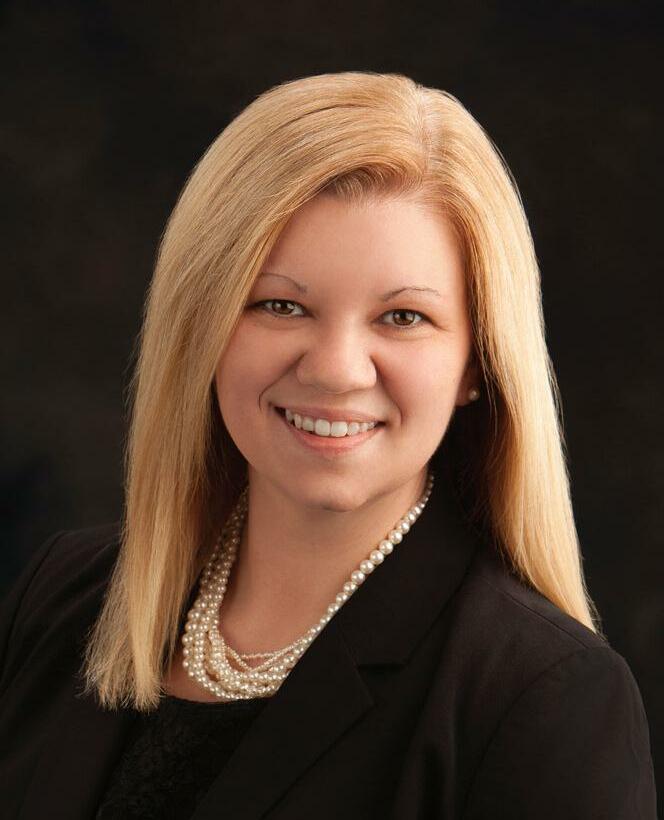
Now’s the time to expand your skills and advance your standing as a young professional in the corporate finance world.
The Tax Cuts and Jobs Act is a hot topic as corporations are trying to understand the impacts to their businesses today and into the future As senior staff members are busy analyzing the new law, running forecasting models, and trying to determine how to navigate the biggest tax code change in more than 30 years, many young professionals are being left on the sidelines asking how they can get in on the action
Tax reform has presented young professionals with a great opportunity to advance their skills and standing in the corporate world if they get in on the conversation. Here’s how.
No matter which accounting group you sit in at your company corporate accounting, treasury, cost accounting, tax, etc. it’s important to have a broad understanding of how tax reform could affect the greater business. Opinions and interpretations of the new tax laws are published seemingly daily to help us in the corporate world gain an understanding of how to begin applying and preparing for them. But if you’re like many of us, it can be difficult to navigate the landscape of articles and narrow your focus on what’s truly relevant.
I am learning that the best approach is to pick a few credible sources to follow Good resources could include publications from the Illinois CPA Society and other accounting, law, and research firms specializing in your industry To narrow your focus further (and avoid receiving more emails then you would ever have time to read), ask a few senior leaders within your organization which sources they find most helpful. You may also want to consider setting aside time each week to watch webinars and read forums related to your industry. Once you have a broad understanding of tax reform, consider narrowing your focus to a topic that pertains to the area you work in.
It’s not always clear which topic is best or most relevant to focus on. Let’s face it, sometimes we just don’t know what we don’t know. Have you considered engaging with others with more experience?
A good starting point is to ask your company’s leaders which areas they would like more information in You should also talk with colleagues in other departments and peers working in similar fields to find out which areas they’re focusing on
Once you identify different areas of importance, focus on an area that’s not only of interest to you but is one your company needs a better understanding of A natural interest in a relevant area will make your research efforts easier and help you stand out as a growing professional in that area
Some of the trending topics within corporations include the foreign-derived intangible income calculation, transition tax, like-kind exchanges, depreciation and the new full expensing rules, the global intangible low tax income calculation, the new limitation on deducting interest expense, as well as many others
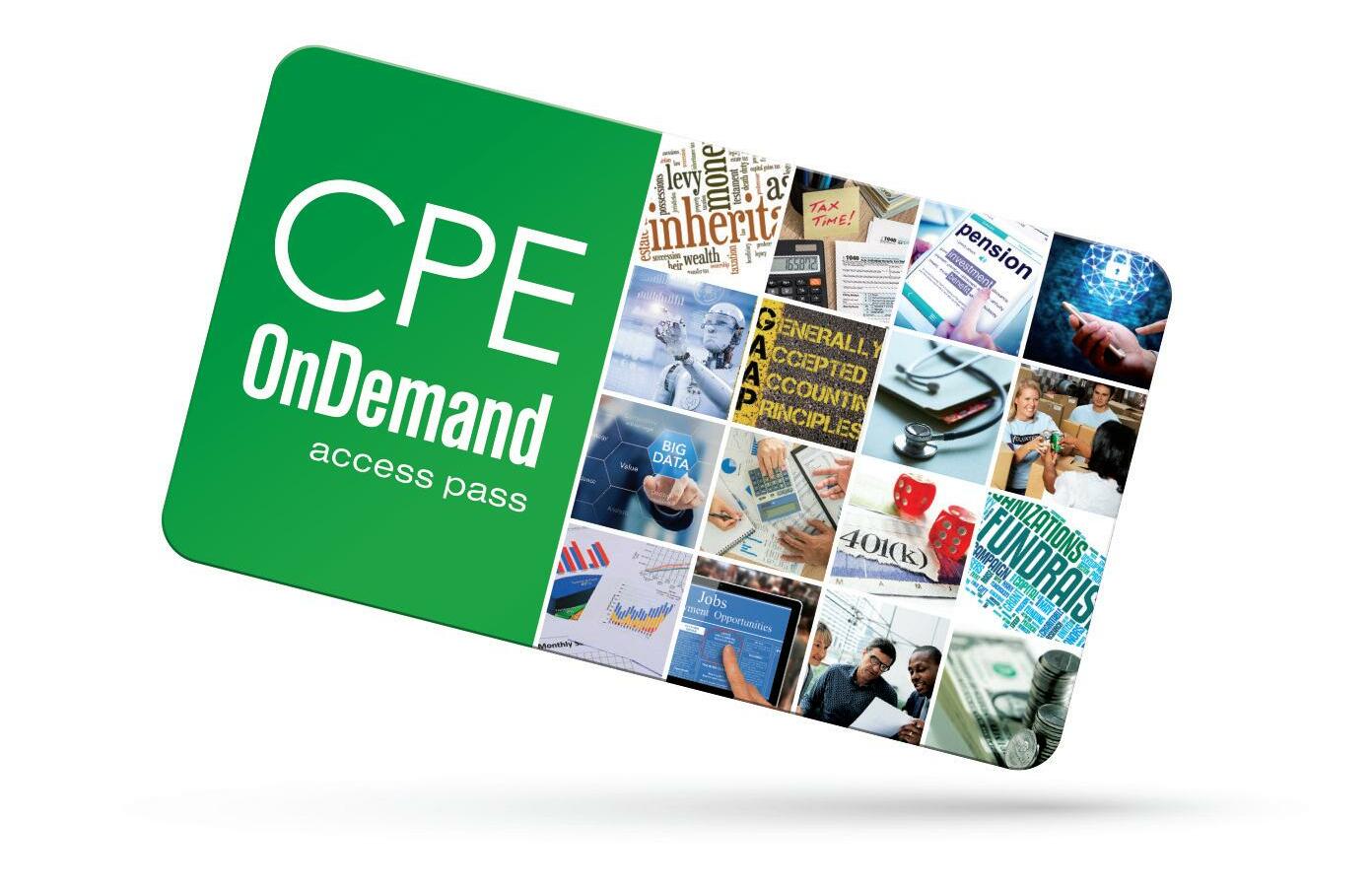
Once you’ve done your homework, you’re set to showcase your analytical skills and highlight your focus on the business I recommend gathering and analyzing data and running specific scenarios that could possibly impact your company As a young professional, don’t be afraid to make mistakes. The point is for you to show your interest in learning and improving the business
Consider approaching the conversation with your superiors by starting with the area you chose to focus on, discussing the data points you put together, and asking what else you should consider Then, and most importantly, go back with your updates and show your leaders how you implemented the changes they recommended And always continue to ask the question, “What else?”
The corporate world is in a heavy learning mode right now due to all the implications from tax reform There has never been a better time for young professionals to get involved and be a part of the conversation. With a large array of topics to focus on, guidance being released regularly, and more promised regulations on the horizon, it’s time to find an area that interests you, expand your insight, and showcase your talents to succeed in the corporate finance world.

Here are the questions prospective partners should ask and the responses they better get
It used to be a no-brainer: When a firm invited a staff person to become a partner, they accepted, no questions asked, and not one iota of hesitation That’s changing Over the past three to four years, I’ve been receiving calls regularly from prospective new partners who are hesitant to accept a partnership offer or are concerned about an offer they anticipate is coming
In part, their hesitation is due to serious weaknesses in the firm observed as staffers, making them question whether they want to become an owner. As a colleague of mine once said, “If you stay in a nuthouse,
The other hesitation factor stems from prospective partners getting smarter. Instead of blindly accepting partnership offers as their baby boomer and Gen X predecessors regularly did, next generation leaders realize there are fundamental financial, governance, and legal questions they need answers to before signing on the dotted line But many of them don’t know enough about how CPA firms operate to ask the right questions that’s where I come in
The interesting spin on this is that the following questions aren’t just for prospective partners, they’re also for existing partners who should be reviewing the same questions and answers to ensure their houses are in order before extending their partnerships
Prospective partners should want to see this document to determine if they can ever meet the qualifications and requirements of partners. Are the criteria reasonable? By the way, it’s perfectly reasonable, and even appropriate, for there to be a major subjective criterion based on existing partners’ sense of trust and comfort with a prospective partner
Beware if the firm wants you to continue functioning as a staff person: (a) working on the partners’ clients without being allowed to act like a partner, and (b) having such a high billable hour target that it prevents you from having time to develop your own business You’ll never be recognized as a real partner by the other partners and staff if you’re seen functioning as a manager with a partner title.
As someone who works extensively with CPA firms on their partner agreements, I can tell you that a shocking number of these agreements are antiquated, many inked 10 to 20 years ago, and thus contain outdated verbiage and lack key modern provisions You would be surprised how many agreements are written with minimal involvement of an attorney or were written by an attorney lacking experience with CPA firms
Critically important areas to watch for but are often lacking include terms for partner buyouts, death and disability, mandatory retirement, duties and prohibitions, grounds for expulsion, and voting rights No one should agree to be an owner in a business without a properly written and signed partner agreement in place.
Q: Is voting fair?
New partners should understand their ability to impact decisions. As a new partner, it’s likely your ownership percentage will be small If voting on firm issues is based solely on ownership percentage, you won’t have much if any say on decisions, which could leave you essentially disenfranchised.
I generally propose firms follow a “one-person-one-vote” rule when it comes to most partner decision-making Exceptions to this rule would include voting on mergers and changing the partner agreement In these cases, voting on ownership interest may be more appropriate.
Q: how is compensation allocated?
Everyone is concerned about their pay, but partner compensation is handled quite differently than for staff Prospective partners need to understand how their compensation will be calculated and determined:
• The compensation system should be performance-based instead of archaic and unfair methods such as ownership percentage, pay-equal, or seniority
• If the firm uses a compensation formula, make sure that:
1 It that has a provision to value and compensate subjective performance attributes, like mentoring staff, fostering teamwork, and management, in addition to production metrics.
2. It isn’t excessively skewed towards book of business. Unless you’re a rainmaker, which is almost never the case for new partners, you’ll be precluded from earning a decent compensation level in a system that overemphasizes book of business
3 It doesn’t base excessive weight on billable hours because this will cause partners to hoard staff-level work instead of delegating it
Q: what is the firm’s profitability?
Asking how revenues and profits are trending is a straightforward question. After all, why would you want to become a new owner of a stagnant, marginally profitable, or declining business?
Q: Is there a cluster of older partners whose retirements and related buyouts will be overlapping?
When multiple key partners retire at the same time, the future viability of the firm could be threatened You don’t want to become a new partner only to have the firm sold in a few short years because it can neither survive the talent exodus from partner retirements or the financial impact of their buyout payments.

Q: what is the buy-in amount?
Don’t be mistaken, the invitation to become a partner comes at a cost What you don’t want to see is an onerous buy-in amount based on ownership percentage times the value of the firm, which usually results in a buy-in totaling several hundreds of thousands of dollars Instead, it should be a relatively nominal amount, say $75,000 to $150,000. The payments should also be spread over several years so that new partners don’t take home less cash than when they were managers
Q: does the firm have retirement and buyout plans in place?
My experience is that two-thirds or more of partner retirement and buyout agreements are poorly conceived Beware of these common flaws:
• A goodwill valuation that is onerous the industry average is 80 percent of revenue
• Payments based on a partner ’s book of business
• Woefully short notice periods 18 to 24 months is recommended
• Virtually no client transition requirements.

• Buyout payments that begin while the partner continues to work and control his or her clients
Q: how do buyout payments impact the income of the remaining partners?
A well-written plan should be structured in such a way that the remaining partners either earn more income or no less than their current income. This is made possible by no longer compensating the retiring partner and using those cost savings to fund the buyout payments. If this doesn’t occur, then the firm’s buyout plan works more like a Ponzi scheme.
Q: Is there a mandatory retirement policy?
While it may seem counterintuitive to want your firm to have such a policy, mandatory retirements are good for the firm. You don’t want to be a new partner in a firm where the old partners work forever, or their retirement dates are unclear Without a mandatory retirement policy, talented young professionals will leave because they’ll see no future for themselves when the old guys or gals hang on forever.
Perennially cited by Inside Public Accounting as one of the 10 most recommended consultants in the country, Marc Rosenberg, CPA is a nationally renowned consultant, author, and speaker on CPA firm management, strategy, and partner issues His 14 practice management books are available at https://rosenbergassoc com/shop/, and Marc can be reached at 847 251 7100 or marc@rosenbergassoc com
Putting your human ethics and creativity to use in critical thinking and complex problem-solving.
Each day we hear more about how artificial intelligence (AI), automation, blockchain, and the likes will change the future of accounting and finance We are told that as accounting and finance professionals, we need to embrace new technology and learn to adapt to stay relevant in the future.
AI will be an increasing larger presence in our world, but it cannot compete with the analytical, emotional, or ethical skills that a human brings to the professional world Take a look at the World Economic Forum’s “Future of Jobs” report that predicts the top 10 skill sets needed to thrive in 2020:
Consider just the top three skills alone complex problem-solving, critical thinking, and creativity and how they apply to the accounting and finance profession You can read the skills as a sentence: We will need creativity in critical thinking to help us with complex problem-solving
In accounting, it can feel like we spend more time gathering data instead of interpreting data When deadlines are tight, it is easy to embrace the attitude of “good enough” once the data is recorded We move from project to project, focusing more on quantity and quickness instead of quality and questioning how the data can make business better for our companies and clients.
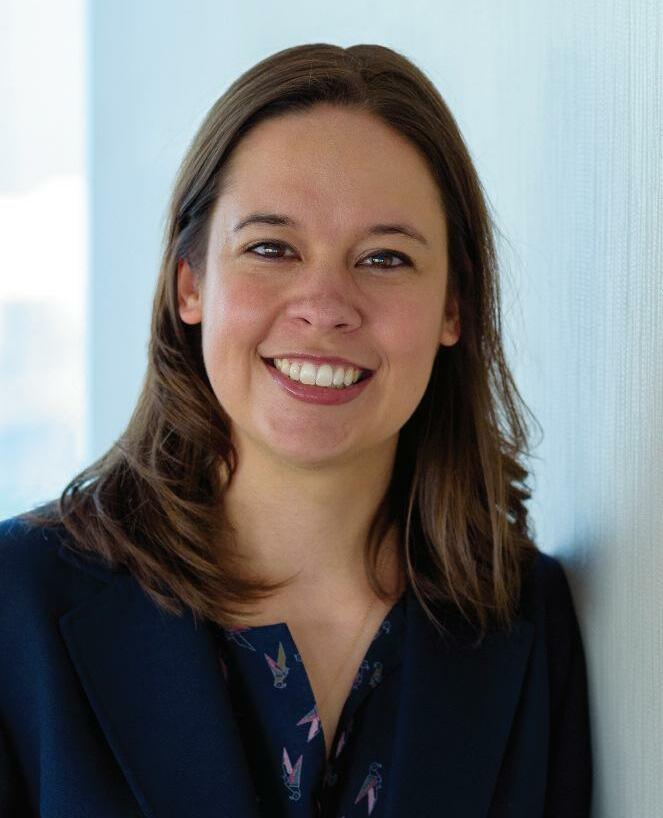
As AI and automation help us work through projects faster, we should refocus our time on critically thinking through data in creative ways to help solve problems and make processes better For example, if you are stressed closing the books every month, you could be setting aside data analysis that would help you understand the reasons why the financials are the way they are instead of just what they are.
How do our ethics play into creativity, critical thinking, and complex problem-solving? You should always approach these activities with a solid ethical framework:
1. Determine your values. What do you care about (e.g. people, innovation, quality, etc.) and how does it align with the missions of your organization and clients? Ask why you are doing something
2. Define your objectives. Ask what it is you are trying to achieve.
3 Develop your plan Ask how you can achieve your objectives This step is where creative critical thinking for complex problemsolving comes in.
4. Direct your plan. Ask who can help you carry out your plan in the right way
5 Debrief Ask what happened because of your plan This step is commonly skipped because it involves analyzing the outcomes of an action, and many people want to jump to the next project Reflection is vital to learning what went well and what needs improvement
Throughout the ethical framework, discuss each step with others Ethical behavior is strongest when accountability exists Gathering different perspectives will encourage critical thinking and facilitate more creative solutions

Again, you must ensure you have enough time to think critically, complete your work, and make decisions Research suggests that people justify shortcuts to meet deadlines The next time you have a short amount of time to close the books, finish tax returns, or complete a consulting project, consider the quality of your work If you are concerned about quality, ask for more time and explain your reasons Give yourself and your team members more time to act ethically
Also, understand the environment in which you are making decisions Ethical priming is the idea that our behaviors are influenced by unconscious clues in our environment The New York Times article, “Our Inconsistent Ethical Instincts,” states: “Our moods can make misdeeds seem more or less sinful Ethical violations become less offensive after people watch a humor program like ‘Saturday Night Live ’ But they become more offensive after reading emotional stories like in ‘Chicken Soup for the Soul ’” The point of knowing the environment around you is that it
matters, and you shape what the environment is for yourself and others around you.
Finally, with enough time and the right mindset, creativity can follow. As mentioned above, talking to others will help generate more creative solutions, and there are other creativity boosters you can try. Here are three easy ones:
1. Look at something green. “Our brains associate the color green which is so prevalent in nature with growth and development And simply thinking about growth has been shown to spur our desire for self-improvement and mastering tasks,” says Stephanie Lichtenfeld, Ph D , in a study by the University of Munich
2. Go for a walk. Our brains need breaks If you try to force creativity, your brain may get frustrated with the task Exercise stimulates creativity because our brains are more wired for movement than for language
3 Keep a journal Draw, write, or do both Drawing activates different parts of your brain than when you think or speak, which will help your brain be more receptive to new thoughts and ideas. Writing gets your ideas out of your head, which you can revisit later. Do you think it is easier to write down ethical solutions or unethical ones to revisit? I trust you agree that it is easier to write down ethical thoughts, and in that case, writing gives you some accountability in your critical thinking and problem-solving
Technical skills will always be important in our profession and we should continue to hone them, but what will continue to separate us from automation and AI and even other professions is our ability to complement our technical skills with real, human ethical behaviors and strategic soft skills
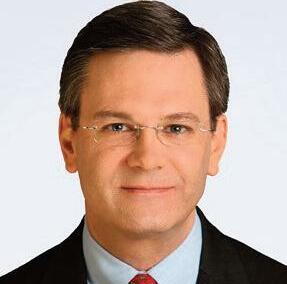 BRACKEN DARRELL PRESIDENT AND CEO LOGITECH
BRACKEN DARRELL PRESIDENT AND CEO LOGITECH
 GAYLE PRESIDENT AND CEO THE CHICAGO COMMUNITY TRUST
GAYLE PRESIDENT AND CEO THE CHICAGO COMMUNITY TRUST
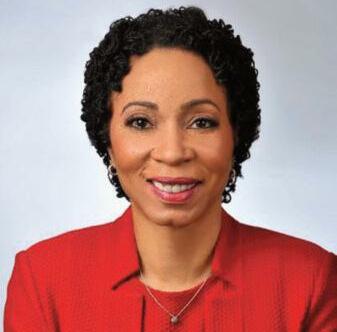
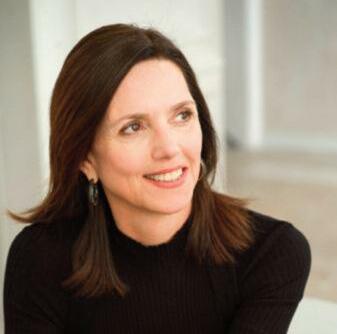 C. COLLINS JR. CHIEF OPERATING OFFICER CORTEVA AGRISCIENCE™, AGRICULTURE DIVISION OF DOWDUPONT™
C. COLLINS JR. CHIEF OPERATING OFFICER CORTEVA AGRISCIENCE™, AGRICULTURE DIVISION OF DOWDUPONT™

When I began my accounting career about nine years ago, I never thought the path would lead to where I am today recruiting Af ter four-anda-half years of auditing, my firm presented me with the oppor tunity to grow the recruiting depar tment by not only assisting with internal hiring, but also assisting with client recruiting ser vices, a newer ser vice line the firm had established
Recognizing this was the road less traveled for most accountants, I excitedly jumped at the oppor tunity To my own surprise, however, I initiall y struggled with the transition As it turns out, working for the same firm, but doing a drastically dif ferent job, is not as seamless as I had anticipated I quickl y began questioning myself, asking: “Is all my accounting knowledge and hard work going to waste?!”
I am passionate about the accounting profession, but I am also passionate about helping people My firm recognized this in me, but it was not until I embraced the oppor tunity I was given that I realized how much more I could do in my new role because of my background and passions
I relate to accounting students and prospective CPAs because I have walked in their shoes I connect with clients and put them more at ease because instead of just speaking to a recruiter, they are speaking to someone who has the CPA credential and someone who has worked with the positions they are recruiting for They are speaking to someone who is one of them Realizing this, I became empowered and inspired and it changed my career for the better
So, here are three pieces of advice I have for anyone that is feeling unmotivated or stuck in their careers
1 If you are dissatisfied in your current role, dig deep to figure out why do not just jump ship When I speak with candidates, I of ten hear comments like, “I’m leaving my role due to lack of growth oppor tunities ” This statement only proves you are missing something in your current job and blindly shooting for a target at your next job Figure out what you are missing before tr ying to find it elsewhere perhaps it is something that can be attained at your current company, like a role change, if you just ask
2 Always prove yourself by giving examples! Abraham Lincoln once said, “Actions speak louder than words ” Rather than telling a hiring manager you have experience doing something, prove you have the agility and initiative with specific examples of past accomplishments Give enough detail to let the listener know your stor y is genuine You never know what oppor tunities might arise when you show who you really are
3 Do not play of f emotions Whether you are wishing you were doing something dif ferent or are second-guessing a job oppor tunity, look beyond the sur face You will be surprised at how much you uncover about yourself and what you want in your career!
Illinois CPA Society member Irma Bondi, CPA , PHR, is an ICPAS Firm Ambassador and recruiting manager with the accounting, tax, and advisor y firm Miller Cooper & Co Ltd in Chicago
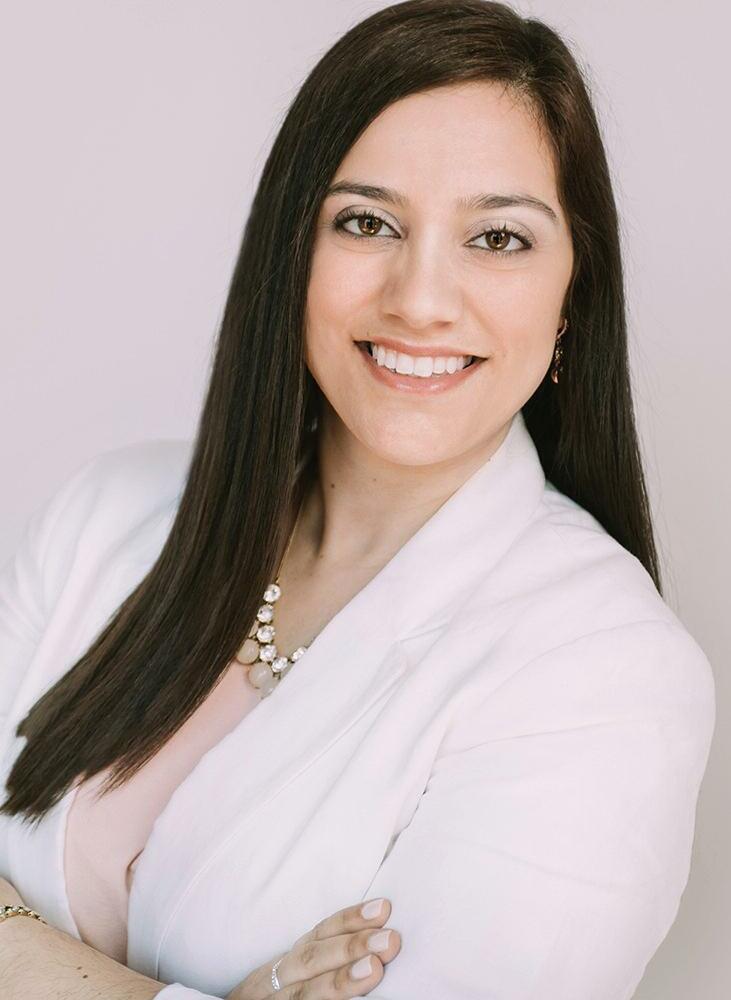
Hoping
By: Crandall & Brackett, Ltd. | Phone: 630 344 2355
Email: rober t@crandall-brackett com | Web: www crandall-brackett com
Our only ser vice is per formed on your behalf in a mutual engagement setting From basic research to a full valuation, we tailor our ser vices to your needs We author, teach and par ticipate on policy setting committees and boards within the valuation profession
ILLINOIS PRACTICES FOR SALE:
Gross revenues shown
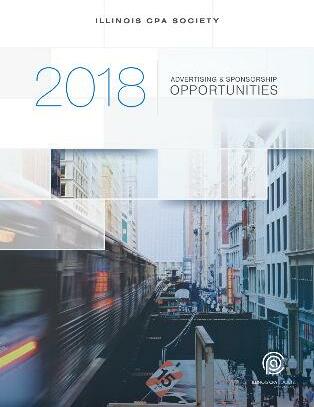
E Central IL CPA $250K; Southern IL (S of I-70) CPA $1 4M; Aurora/Naper ville Area CPA $453K; Naper ville CPA $27 1K; N Shore/Lake Co CPA $347K; Nor th Side of Chicago CPA $1 124M

For practice details call 1-800-397-0249 Or, visit us at www APS net to inquire about available oppor tunities and register for free email updates

THINKING OF SELLING YOUR PRACTICE?
Accounting Practice Sales is the leading marketer of accounting and tax practices in Nor th America We have a large pool of buyers, both individuals and firms, looking for practices now We also have the experience to help you find the right fit for your firm, negotiate the best price and terms and get the deal done
To learn about our risk-free and confidential ser vices, call Trent Holmes at 1-800-397-0249 or email Trent@APS net

Find the tools you need to succeed!
In a profession historically dominated by men and touted as a means to wealth, Stella Marie Santos, CPA , is doing things dif ferently – and for all the right reasons Inspired to create a firm that breaks from the status quo, on Nov 11, 20 11 (11/11/11), Santos and her two sisters formed the CPA firm Adelfia LLC, a cer tified minority and women business enterprise focused on the pursuit of excellence and equality instead of profits That’s not to say that professional accolades and financial rewards haven’t flown Adelfia’s way In fact, Santos sits on the Illinois CPA Society’s Board of Directors and received the Society’s 20 17 Lester H McKeever Jr Outstanding Leader in Advancing Diversity Award But what’s truly unique about Adelfia is that it’s now managed by seven female minority par tners and has 35 fulltime, predominantly minority, employees Below, Santos shares her insights and what her ef for ts mean for women and minorities in the CPA profession

Q: Social and equality issues are once again in the limelight. What impact do you see this having on your firm and in the public accounting profession?
The increasing attention on social and equality issues provides our firm and staf f a wider forum to share our own experiences, struggles, and responses to challenges as a minority/ethnic and women-owned firm Initially, we sometimes experience hesitation from clients to listen or work with us, but as soon as we present the accounting and auditing issues with professional integrity, we see minds open and look beyond our race and gender In the public accounting landscape, I feel it is much easier to overcome social and equality issues because technical skills and experience are the foundation for success
That said, this attention also has created an awareness of the diversity of skills and perspectives we of fer to the public Sometimes, there is even a preference to work with us because organizations want to have the exposure and experience of working with a minority/women-owned firm
Q: How would you describe your leadership philosophy and what has influenced it most?
“ We value your needs” is the philosophy I have inspired at Adelfia Valuing one’s needs means accepting someone for who they are, providing oppor tunities, and focusing on what they can of fer Be it with your employees, coworkers, clients, or the public, this philosophy guides you to be open-minded, give your best, and foster trust and cooperation
This leadership philosophy has been largely influenced by my struggles to be recognized as a professional beyond the color of my skin, how I speak and write the English language, and my being a gay woman I would not have attained my professional growth and advancement were it not for the clients, mentors, and colleagues who gave me a chance and provided me with an oppor tunity to learn and develop my skills – this is what I, and Adelfia, aim to give back
Q: What advice do you have for minorities who want to make an impact in the profession?
Keep yourself updated with technical knowledge, conduct yourself with integrity, and be willing to give yourself and others a chance to add value to any situation Have passion for what you do, because work is not work if you love what you do Come to the table not feeling inferior, but empowered, because you have a lot to of fer Be proud of who you are as a minority Enlighten others who have dif fering views by sharing your point of view in a respectful manner You can have the greatest impact on the accounting profession by being engaged in adding to its diversity and richness

September 12
September 25
September 26
October 23
October 26
October 30
Fraud and Forensic Half-Day Conference
Tech Innovation Conference
Financial Reporting Symposium (In-Person & Simulcast)
Agribusiness Conference (In-Person & Simulcast)
Women's Leadership Forum
Construction Conference (In-Person & Simulcast)
September 20 | November 1 | November 15 | December 4 | December 15 Business Development Academy
July 24
MS Excel Spreadsheet Formatting, Graphs and Graphics
August 6 World Class Negotiating Skills
August 7-8 Staff Training Semi-Senior
August 9
August 13
August 14
August 15
August 16
August 20
August 20
August 20
August 9
Women’s Event: Margarita Mixer
August 16
CPA and Attorney Speed Learning
August 28-29
ICPAS SUMMIT18 (Formerly the Midwest Accounting & Finance Showcase)
September 25
Professional Spotlight: Miller Coors CFO
October 18
Young Professionals Emporium Arcade Bar Networking Night
Form 990: Mastering Its Unique Characteristics (In-Person & Simulcast)
Project Management Skills for Non-Project Managers
Upcoming Peer Review: Is Your Firm Ready? (In-Person & Simulcast)
Becoming an AICPA Peer Review Team or Review Captain: Case Study Application
AICPA Peer Review Program Advanced Course (In-Person & Simulcast)
The Tax Cuts and Jobs Act: A Guide to the Most Sweeping Tax Reform in Over 30 Years
(In-Person & Simulcast)
Essential Leadership Skills for Front Line Managers and Supervisors
Understanding Section 199A: The 20% Deduction for Pass-Through Entity Owners and Investors (In-Person & Simulcast)
For a full listing of all upcoming education programs visit www.icpas.org/education
August 23
August 28
September 7
September 20
September 24
September 26
September 27
October 4
October 15
Effective Presentation Skills: Delivering Presentations With Power, Persuasion and Impact
MS Excel: Database and Pivot Tables Made Easy
Real-World Fraud Found in Governments and Not-for-Profits (In-person and Simulcast)
MS Excel: Formulas and Functions
Basis/Distribution for Pass-Through Entities: Simplifying the Complexities (In-person and Simulcast)
Ethics: Critical Thinking Case Studies (Morning) (In-person and Simulcast)
Construction Contractors: Accounting, Auditing and Tax

Essential Course for Preparing Not-for-Profit Financial Statements Under ASU No. 2016-14 (In-person and Simulcast)
Essential Leadership Skills for Front Line Managers and Supervisors
October 29-30 1040 Tax Return Workshop
October 31
October 31
Preparation, Compilation, and Review Engagements: Update and Review (Morning)
Bottom Line on the New Lease Accounting Requirements (Afternoon) (In-Person & Simulcast)
Accounting Principals and Parker + Lynch know every client’s situation is unique Different contexts require custom considerations. We balance both business and human factors when recruiting candidates and pairing them with our clients We can help optimize your organization’s efficiency and effectiveness through services such as temporary staffing, temp-to-hire, consulting and permanent placement. Let our experts help you mold your team into something great Contact us today.
